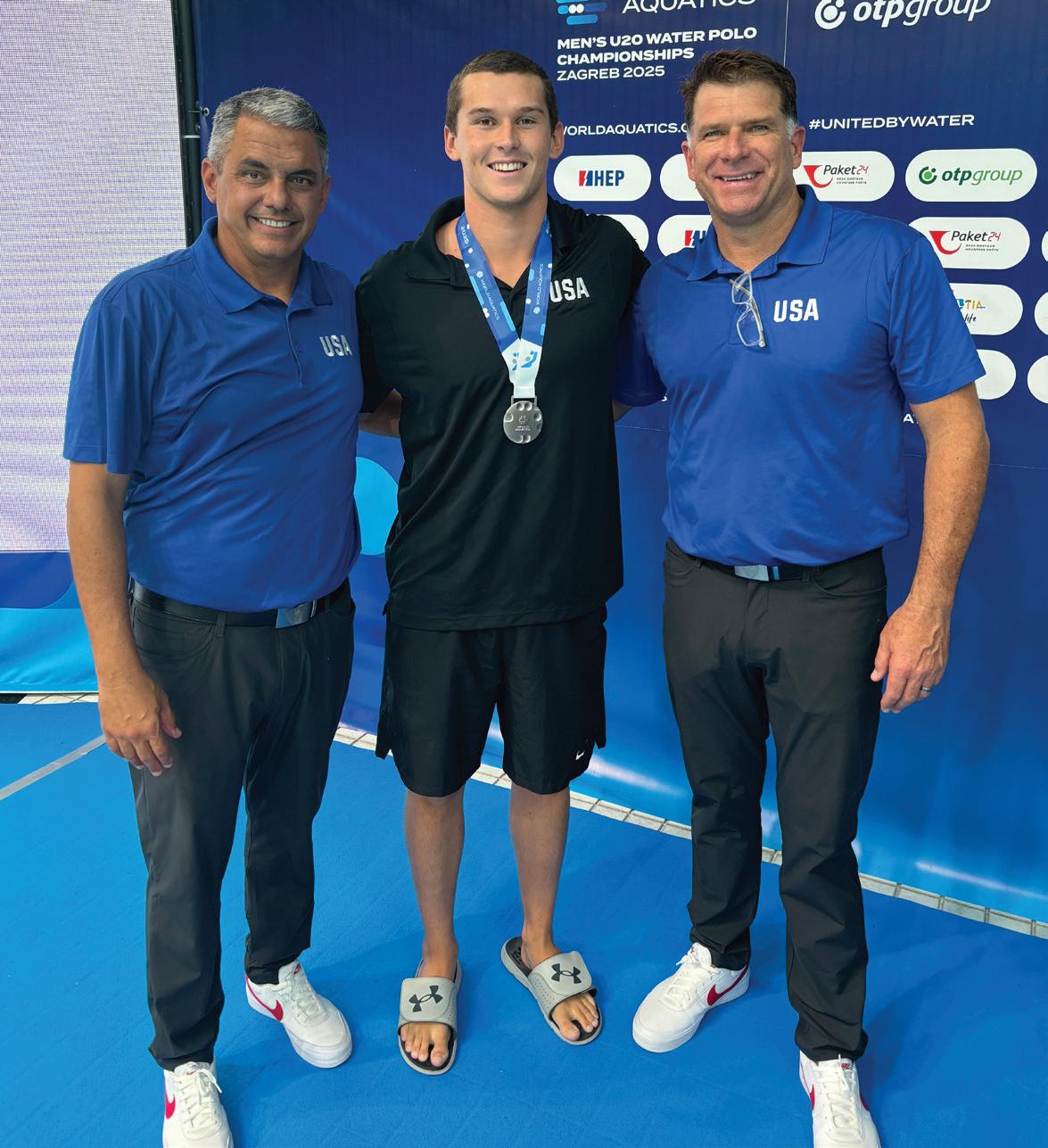Volume LIV | Issue 3 | October 3, 2025 | pepperdine-graphic.com | follow us @peppgraphic
SUCCESS SWELLS
Pepperdine Women’s Swim and Dive team had a successful season last year, claiming the Mountain Pacific Sports Federation conference title. With a senior-heavy squad, the Waves will look to build on this success.
See SPORTS

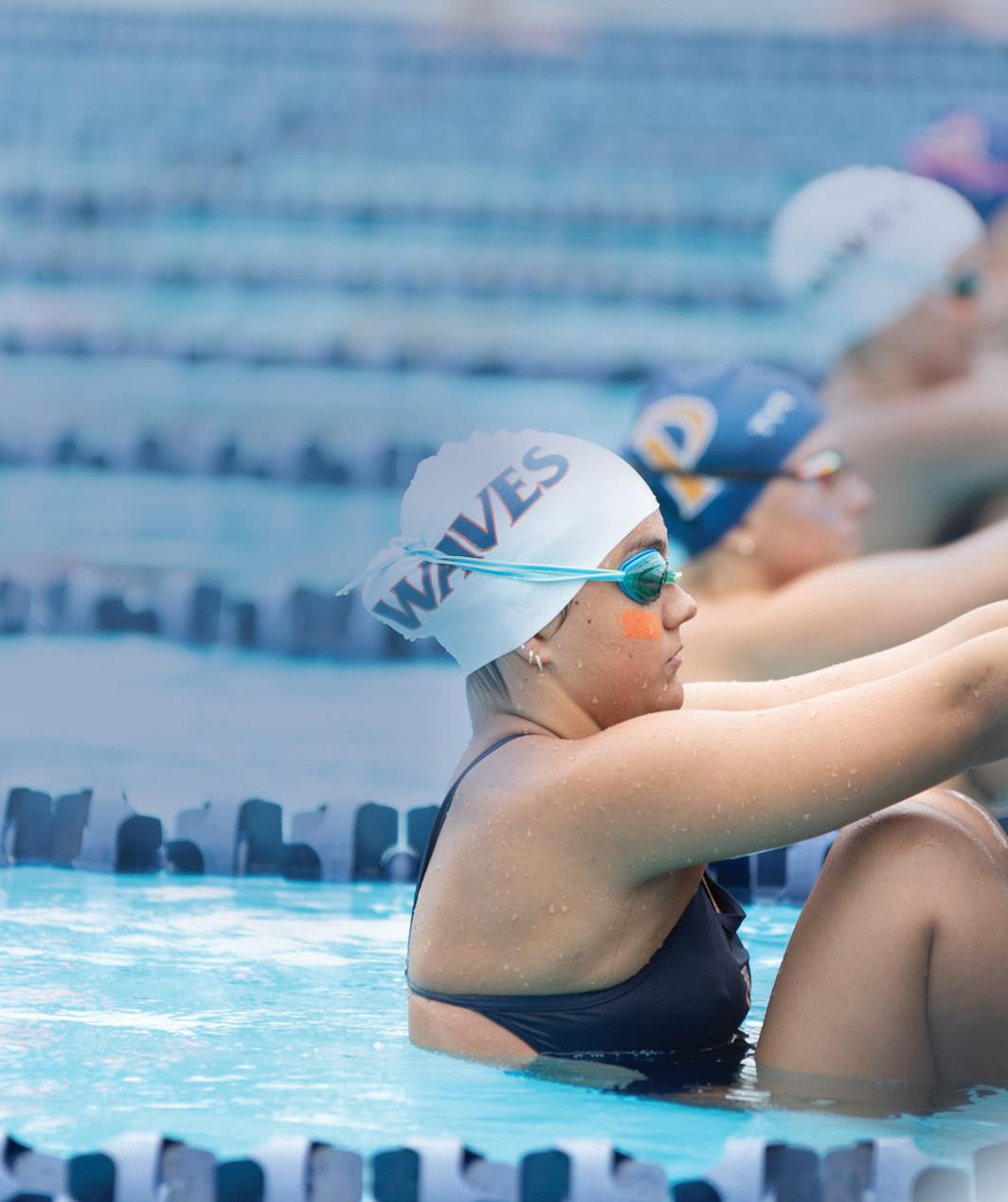
Pepperdine drops four spots in 2026 college rankings
Pepperdine is ranked 84th in the 2026 edition of the U.S. News & World Report’s Best National Universities rankings, a four-spot drop. The U.S. News & World Report ranking methodology remained essentially unchanged this year.
Opinion: AI is a symptom of the educational problem
The vast majority of students use AI in their lives, including in their education. Perspectives Staff Writer Noah Burton argues this is a problem with the educational system, and AI use is not good for students.
Celebrating life creates an exciting world
In a fast-paced world, Pepperdine students are finding joy in celebrating life’s little moments. From spontaneous coffee dates to elaborately planned parties, students are finding that every day holds a reason to celebrate.

p c o m i n g e v e n t s . . .
Oct. 4
Women’s Soccer vs. Pacific
Come cheer on Women’s Soccer as they compete against Pacific. The game will be held at Tari Frahm Rokus Field at noon.
Oct. 10-13
Fall Break
The Pepperdine community will have a four-day break from classes. The break will be held from Friday through Monday.
Oct.
14
On Broadway
“On Broadway” will deliver a night of live music from hit Broadway shows such as “Wicked” and “Hamilton.” The show will take place in Smothers Theatre at 7:30 p.m.
Oct.
19
Men’s Water Polo vs. U.S. Air Force
Come out and support Men’s Water Polo as they face off against the U.S. Air Force Academy. The game will be held at the Raleigh Runnels Memorial Pool at 1 p.m.

Good News: Fall in love again and again
Haylie Ross Life & Arts Editor
Love is the breath of life. Love defines humanity. Love colors the world.
Yet, I haven’t always seen it that way. I used to believe life’s beauty had to be earned — chased in milestones, achievements or excitement. But lately, I’ve come to realize life doesn’t ask to be earned. It simply asks to be noticed. I want to romanticize life, but I only find the mental capacity to do it if I am doing something out of the ordinary. I have recently made a mission out of cherishing the ordinary just as much as I praise the grand moments of life. I aim to find romance in my everyday life — not in the overly curated way, but in the deeply human way.
I let songs make me feel like I’m in a movie even if I’m just folding laundry. I treat each day like it has the potential to be my favorite because — miraculously — some of them will turn out to be.
When I sit at the dining table in my dorm room doing homework with my roommates, I take a moment and appreciate the beauty of friendship and how lucky I am to be surrounded by other ambitious women.
When I’m driving to the grocery store, I open my window and let the salty sea breeze fill my lungs. I allow
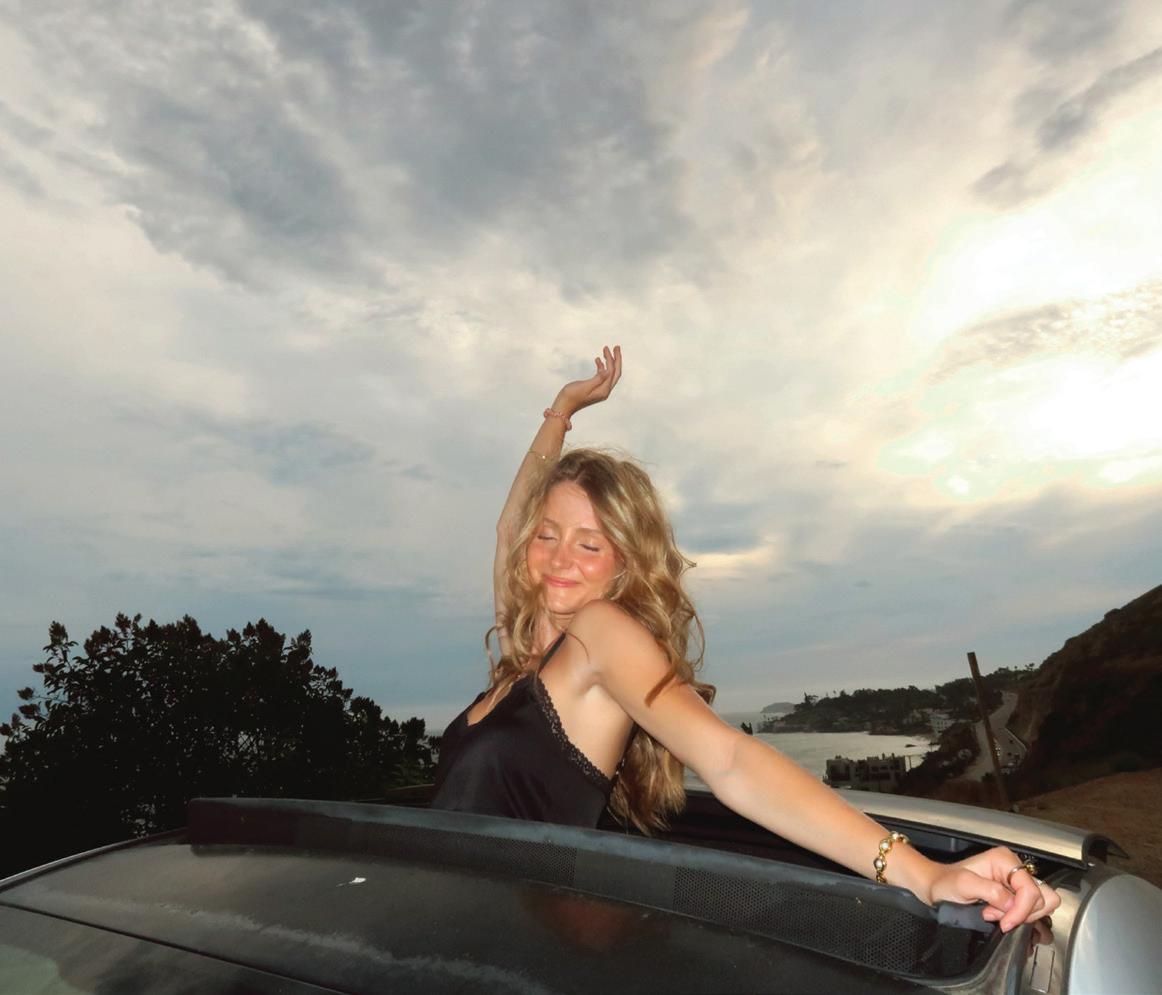
see something
myself to reflect on how much I wanted to be right where I am now only a few years ago.
I often forget that being alive is a gift — not always an easy one, but a gift nonetheless. Even on my worse days where I don’t feel motivated to appreciate anything, I still am grateful to be alive because I know that even if this day is bad, a better one will come along again.
There are people we haven’t met yet who will love us, books we haven’t read that will move us and moments that will change us.
I try my best to see beauty not as something rare, but as
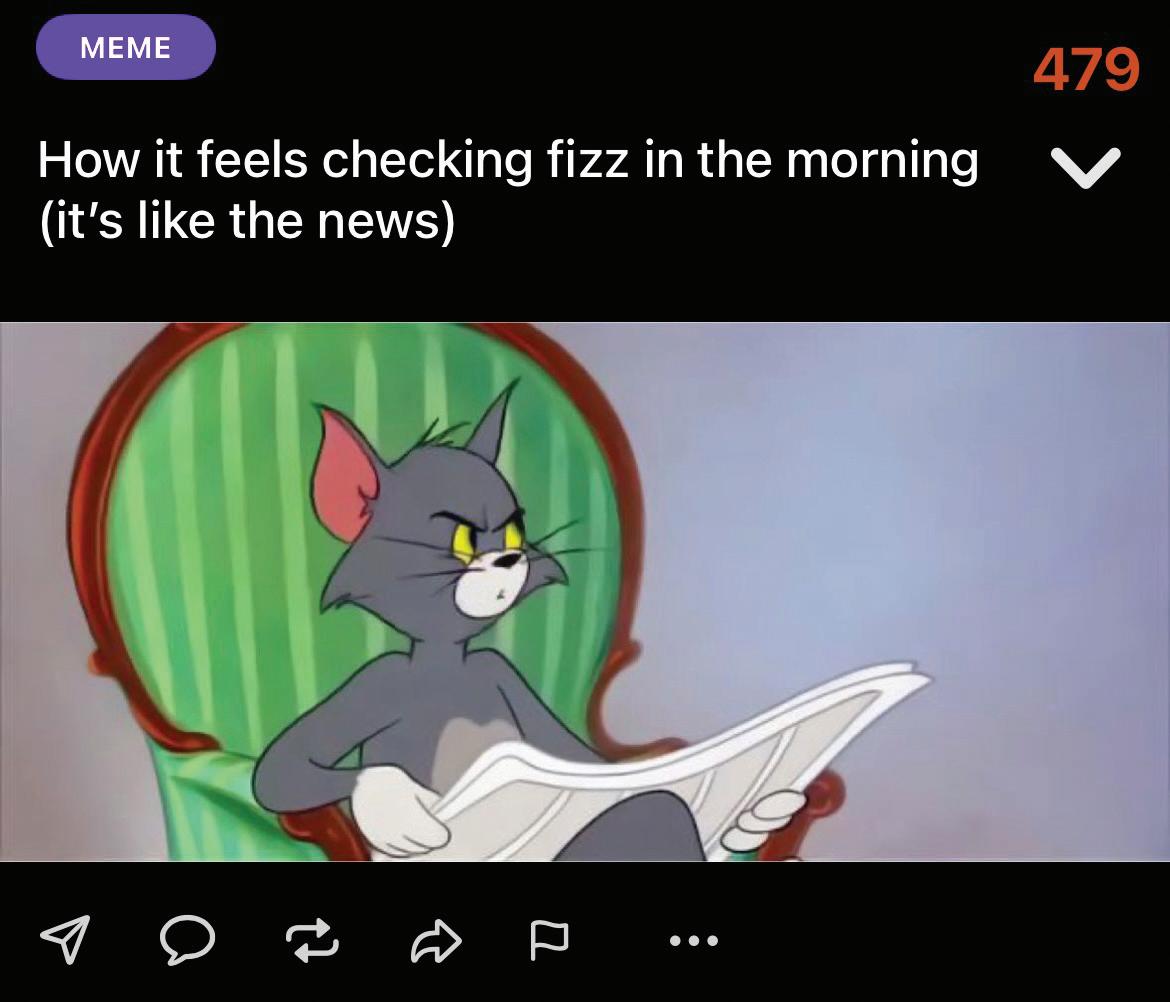
“Pepperdine Graphic Media (PGM) is an editorially independent student news organization that focuses on Pepperdine University and the surrounding communities. PGM consists of the digital and print Graphic, a variety of special publications, GNews, Currents Magazine, social media platforms and an Advertising Department. These platforms serve the community with news, opinion, contemporary information and a public forum for discussion. PGM strengthens students for purpose, service and leadership by developing their skills in writing, editing and publication production, by providing a vehicle to integrate and implement their liberal arts education and by developing students’ critical thinking through independent editorial judgment. PGM participates in Pepperdine’s Christian mission and affirmations, especially the pursuit of truth, excellence and freedom in a context of public service. Although PGM reports about Pepperdine University and coordinates with curricula in journalism and other disciplines, it is a student (not a University) news organization. Views expressed are diverse and, of course, do not correspond to all views of any University board, administration, faculty, staff, student or other constituency.”
something constant, waiting to be noticed.
Take advantage of every moment you have on this earth and find the beauty in it.
Kiss a stranger, dance in the rain, laugh over shared memories with friends, cry over a good movie.
Whether it’s falling in love with the walk to your Spanish class or even falling in love with your soulmate — fall in love again and again.
haylie.ross@pepperdine.edu

Pepp drops four spots in 2026 rankings
Henry Adams News Editor
Oliver Evans News Staff Writer
Pepperdine University is ranked 84th in the 2026 edition of the U.S. News & World Report’s Best National Universities rankings, dropping four spots since last year’s edition. The national university rankings were released Sept. 23.
The U.S. News & World Report’s college rankings are a data-driven assessment of academic quality and graduate success that has guided millions of students and families in their college search, according to the U.S. News. When a university moves up or down two or three spots, that is insignificant, said Lee Kats, dean of Seaver College.
“Teaching undergraduates is our highest priority and will always be,” Kats said.
Interpreting the Results
Pepperdine tied with the University of Illinois Chicago, Yeshiva University and Worcester Polytechnic Institute in Massachusetts, according to the U.S. News and World Report 2025-2026 rankings.
A rankings overhaul in the 2024 edition led to Pepperdine dropping 21 spots in the ranks, according to previous Graphic reporting. Since then, the U.S.
News and World Report ranking methodology remained essentially unchanged this year, with the same factors and weights, according to the newspaper. In this new system, Pepperdine’s ranking has been on a consistent downward trend.
The collection of data points related to graduation rate is more highly weighted by U.S. News at around 21%. The guess is that this was likely the primary factor in the drop, Kats said.
Pepperdine’s average sixyear graduation rate went down from 85% last year to 84%, according to U.S. News. In addition, the graduation rate of Pell Grant recipients — 5.5% of the ranking’s weight — dropped from 85% to 83%.
Pepperdine is an R2 University, despite research publication not being a primary priority, unlike an R1, where scholarly research is often unrelated to the learning objectives of undergraduates, Kats said. In contrast, the scholarship at Seaver is both related to and beneficial for students.
Pepperdine’s financial resources rank, which measures the proportion of total expenditures toward “functional” academic costs against student enrollment, dropped from 60 to 103.
“Class size used to be part of the metric — part of the formula — and it’s no longer part of the equation,” Kats said.
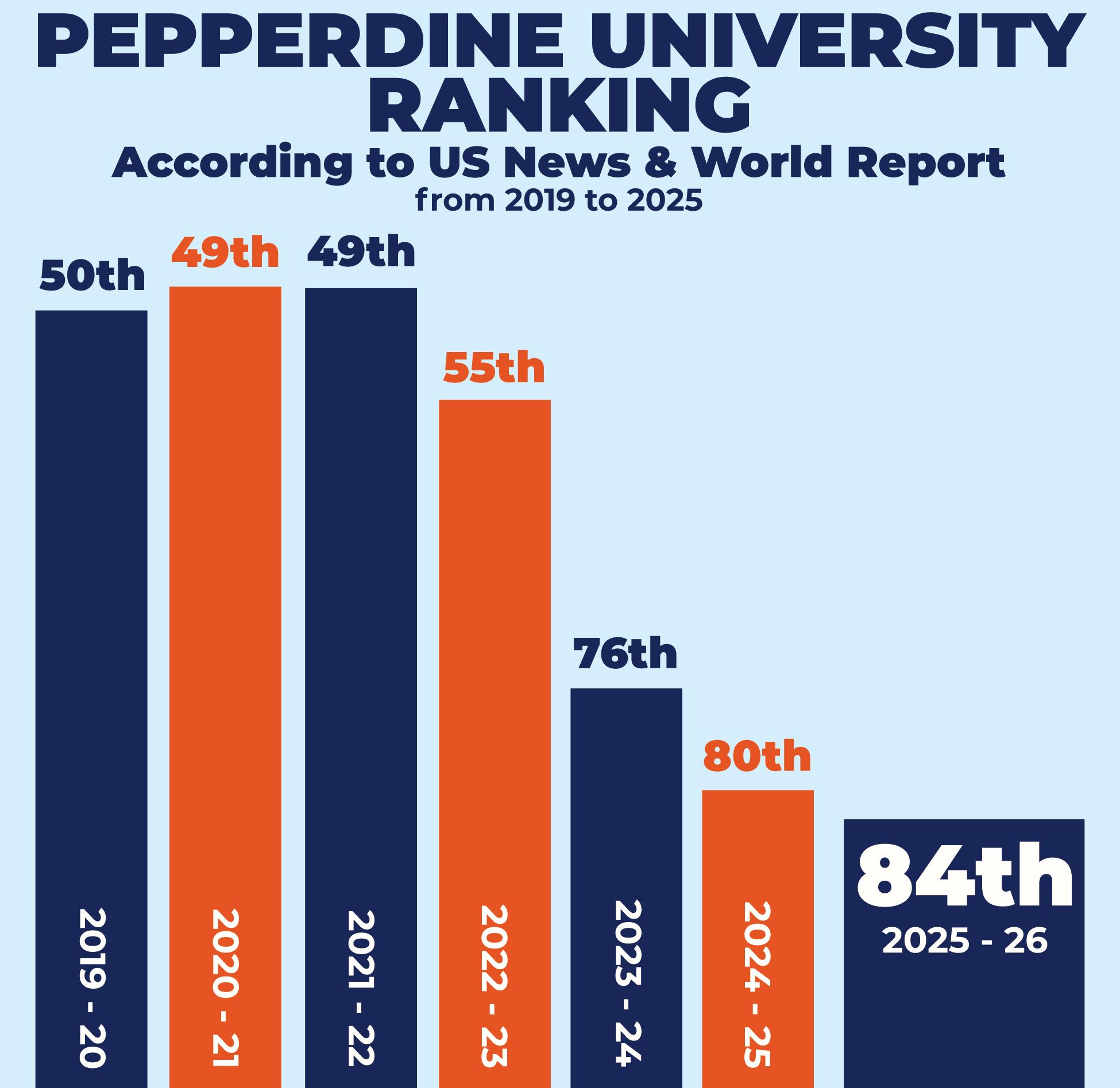
Class size hasn’t been part of rankings since 2023, according to previous Graphic reporting. Pepperdine also dropped from 48 to 53 in the Best Colleges for Veterans ranking, from 74 to 103 in the Best
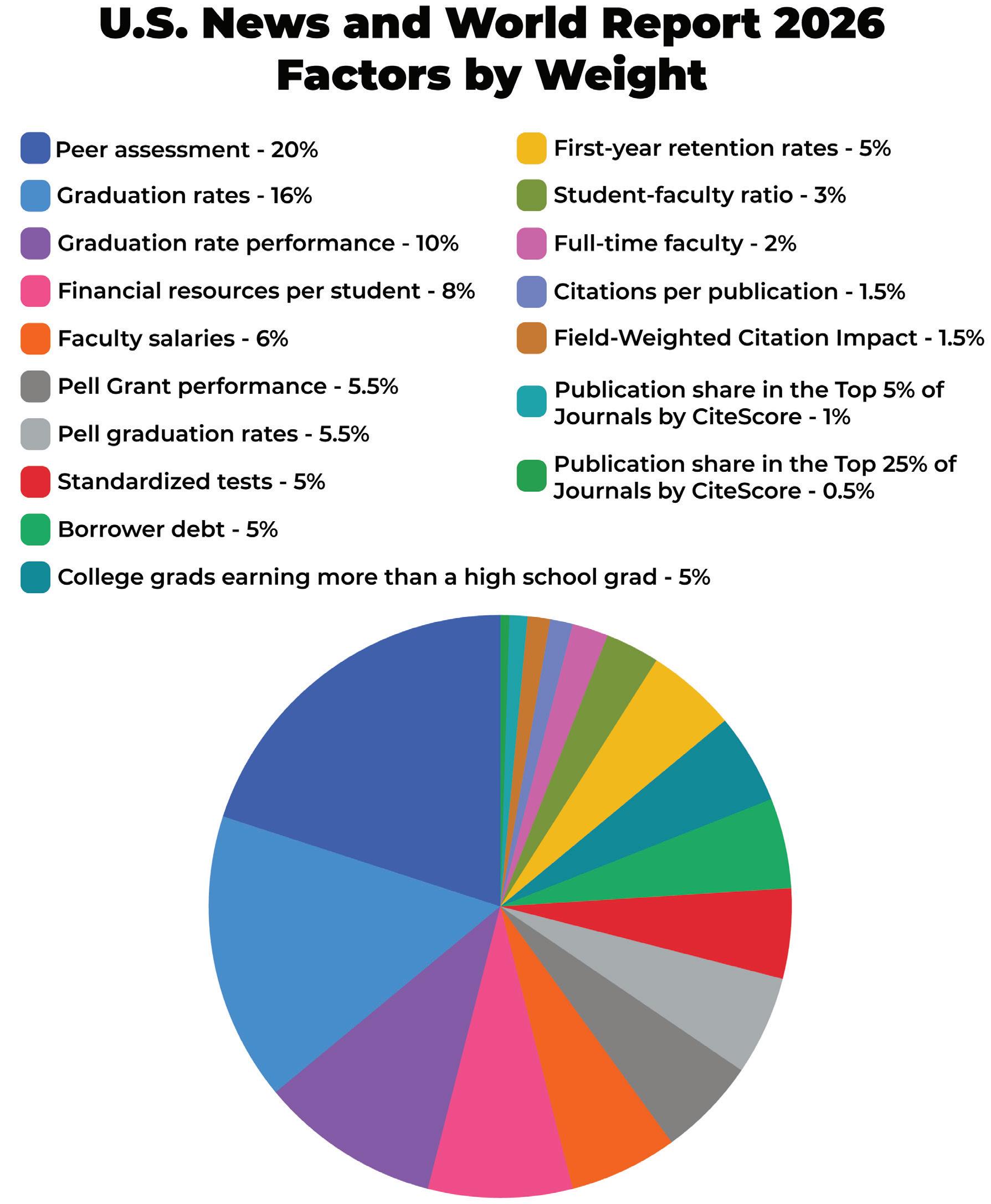
Value Schools ranking and from 75 to 77 in the Top Performers on Social Mobility ranking.
First-year retention, graduation rates and peer reputation are the factors that need to be emphasized to make Seaver a better college, Kats said. As dean, he wants to highlight those three factors.
Peer assessment, which makes up 20% of the ranking, measures how schools are regarded by top administrators at other institutions, according to U.S. News. The peer assessment rating, based on a scale of one to five, is based on averaged data from a survey sent to administrators across the country that asks them to assess the overall academic quality of other institutions’ undergraduate programs. Pepperdine dropped from 3.5 to 3.4 last year and remained at 3.4 this year.
Areas of Improvement
Pepperdine has improved its faculty-student ratio from 13:1 to 12:1 since last year. This statistic accounts for 3% of the weight. Also, Pepperdine rose from 45 to 39 in the Best Undergraduate Teaching ranking, according to U.S. News.
“If you’ve got really low numbers very near the bottom, or you’ve got very high numbers very near the top, it’s hard to get movement,” Kats said. “We’ve always had pretty good numbers around graduation rates and retention.”
Reactions
The Graphic spoke to several students about the rankings.
| Creative Director
“I still feel pretty secure,” said junior Isabella Pendleton, a pre-med Sports Medicine major. “Hopefully, it doesn’t Junior Jewelene Vash, a premed Nutritional Science major, said her college choice may have been different had she known the rankings would drop.
Religion and Sustainability Professor Chris Doran, president of the Seaver Faculty Senate and Seaver Faculty Association, said he was disappointed that the University administration has yet to put together a panel or task force to address the continuous decline in rankings. The Seaver Faculty Senate works closely with Kats, according to previous Graphic reporting.
“I think that lack of urgency [from University administration] is really distressing to a significant chunk of our faculty because we know there’s going to be real-world consequences from such a dramatic drop in the rankings,” Doran said.
Doran said faculty recruitment and enrollment — especially among international students — were among his concerns. He said he hopes Pepperdine ensures its marketing highlights its research opportunities, and he is confident Kats will do what he can within his power to address the rankings.
Reel Inn Malibu fans call for rebuilding; it might happen
Emma Martinez Community Reporter
The tide might be turning for the owners of the Reel Inn Malibu.
The State of California would not continue to lease the site of the beloved seafood restaurant to its owners, Andy and Teddy Leonard, after it was devastated by the Palisades Fire, according to the Wall Street Journal.
With seemingly no hope of rebuilding, fans of the restaurant took to social media in mass numbers expressing disappointment in the state. Less than a week after the state shut down the possibility of rebuilding, the owners of the Reel Inn received a letter from Armando Quintero, director of California Department of Parks and Recreation, offering support in looking into the restaurant coming back to the state property.
“I’d like to take this opportunity to reaffirm our commitment
to thoughtfully exploring a path forward that makes it possible for the Reel Inn to thrive on State Parks property while serving current and future generations,” Quintero wrote in the Sept. 5 letter to the Leonards.
This would not have been possible without the support of community members, Topanga R.E.A.C.H Founder Ashley DeLuis said.
“The community members are the only reason that this is turning around in a positive way,” DeLuis said.
State Supports Reel Inn Owners
State Park officials did not intend to cause distress to the Reel Inn owners, the department wrote in a Sept. 16 statement to the Graphic.
“Our desire has always been to continue to partner with The Reel Inn,” the department wrote. “State Parks regrets and has personally apologized to

the Leonards for the distress caused.”
Fans of the restaurant said this message provides hope, but the letter to the Leonards said there is no timeline for when the rebuilding would occur.
“While we are not yet in a position to define a timeline, please know that our priority is to move collaboratively and amicably toward a solution that honors the Reel Inn’s legacy while respecting the stewardship responsibilities entrusted to us,” Quintero wrote.
In the meantime, LA water and power crews are using the land that previously included the site of the Reel Inn as a staging ground to restore the power grid in the Pacific Palisades and Malibu,
New Malibu initiative pushes residents to rethink wildfire safety
Melissa
With California wildfires becoming more frequent, a statewide initiative called Zone Zero is pushing homeowners to rethink how they protect their property during a fire.
The regulations focus on the fivefoot buffer surrounding a home, known as Zone Zero, to create an ember-resistant defensible space that can prevent structures from igniting.
Malibu Fire Liaison Bradley Yocum said that Zone Zero plays a role in reducing fire risk.
“The science is saying that if you reduce the combustibles around that zero-to-five-foot zone from the structure, you can drastically reduce the chance of that structure catching fire,” Yocum said.
Gov. Newsom Pushes for Action
Yocum said that California has seen an increase in destructive wildfires over the past decade, with some of the most damaging blazes occurring in recent years. Following the latest fires, Governor Gavin Newsom asked state officials to speed up the implementation of
Zone Zero regulations, Yocum said.
“We got our tails kicked from these [past] fires, and the fires are becoming more frequent,” Yocum said. “This last set of fires just made a decision of the people running our government, saying, ‘Hey, we have to do something — we have to make some kind of change.’”
Resistance and Challenges
The push for compliance has faced challenges. Yocum said homeowners have expressed frustrations about changes required under Zone Zero, specifically the removal of plants and trees close to their homes.
“They’re getting a lot of pushback, and the reason [is] people don’t want to get rid of some of those combustibles,” Yocum said. “Change is hard, but change is a necessity in this scenario.”
In a Sept. 21 email to the Graphic, Malibu City Council Member Haylynn Conrad wrote that Malibu’s steep slopes, native vegetation and limited budgets have complicated compliance.
“Zone Zero is well-intentioned but may be a knee-jerk reaction that is hard to enforce and risks pitting neighbor against neighbor,” Conrad wrote. “The government failed for years to clear
according to the Los Angeles Department of Water & Power.
The Community Supports Rebuilding
While the statement Quintero wrote gave no timeline, fans of the seafood restaurant are willing to do whatever it takes to make rebuilding possible.
British music executive Miles Leonard said he would be willing to fly overseas to help rebuild one of his favorite restaurants.
“I said, ‘Look, if you’re rebuilding, and you need help, it’s not just money, and you need hands out there. I would come spend a month out there, roll my sleeves up and help,’” Leonard said.
Leonard said he thinks he is
not the only one willing to go to these lengths.
“I know that other people would want to try and do everything in their power to make this happen,” Leonard said.
Along with Leonard, thousands of fans commented on Facebook posts about the restaurant not being able to rebuild.
With the optimistic update from State Parks, DeLuis said the community is ready to rally behind the Reel Inn, no matter what that looks like.
“Honestly, they could start out with a bare-roomed shack and people would be lined up around the corner to support them,” DeLuis said.
emma.martinez@pepperdine.edu

Malibu Fire Liaison Bradley Yocum gives a walkthrough of a local home. He showed the high-risk areas and explained Zone Zero regulations designed to protect properties from wildfires.
brush on its own lands, and now much of the burden falls on homeowners. Being a responsible homeowner and doing brush clearance is essential, but you are only as strong as your neighbor’s hardening.” “Hardening” describes a home’s resistance to fires.
Deadlines are approaching for compliance. Yocum said new construction must meet the Zone Zero requirements by 2026, and existing homes will need to be retrofitted by 2029.
Walkthrough Insights
During a walkthrough of a Malibu home, Yocum pointed out the high-risk features, such as wooden fences and flammable landscaping, to show how Zone Zero application is practical.
“What we try to tell people is break that connection up,” Yocum said.
He said he recommends replacing flammable materials with decorative rocks and succulents that reduce fire risks while also maintaining landscaping.
“There’s a way to do it to make your landscape and vegetation aesthetically pleasing and at the same time reduce the ignition potential of your structure,” Yocum said.
Preparation and Awareness
Yocum said preparation is key during fire season.
“Hard your home off, lower the amount of fuel you have around your structure and just get your place prepared, and then leave — get out of the way,” Yocum said.
Conrad wrote that education and community involvement are also necessary.
“Fire safety here is everyone’s responsibility,” Conrad wrote. “We all choose to live in a high-severity fire zone, and there is a responsibility that comes with it. Just like someone in Kansas plans for tornadoes, we need to plan for fire.”

PERSPECTIVES

Art by Cara Tang | Art Editor
Staff Editorial: Finding your purpose in education
Graphic Staff
Editor’s Note: PGM staff members decide on the topic of a staff ed together. The staff as a whole provides opinions and content included in this staff ed to provide thoughts about and shed light on solutions for happenings at Pepperdine.
The college experience can be summed up by student life and getting through your GEs, but Pepperdine takes it one step further. We might not have a football team to rally behind, but the students do have a ton of cheerleaders behind them to help their purpose.
From the Seaver Student Success Center to the educational clubs on campus, Pepperdine students can easily find their purpose through these resources.
Professional Growth
During the first month of the academic year, students have the opportunity to see all that Pepperdine has to offer on full display on Main Campus. Tidepools is a great way to see all the clubs, organizations and resources that Pepperdine offers its students.
The professional clubs for Business majors, such as Alpha Kappa Psi (AKPSI), Distributive Education Clubs of America (DECA), Delta Sigma Pi (DSP), Rotaract International
and Women in Leadership, are just a few of the professional clubs on campus.
Having outlets such as these to foster a space for those with a common interest can either stir passion within a student or be the answer for them to find their passion elsewhere.
Being surrounded by like-minded, motivated peers teaches you to collaborate effectively, take initiative and grow both personally and professionally.
Studying Abroad
The International Programs offer amazing opportunities to see the world while continuing your studies, but the summer programs are one of a kind.
From the Edinburgh Theatre program to the Fiji Program:
The Mission at Natuvu Creek, Pepperdine students can spend their time across the globe while gaining an education in their chosen concentration.
The Washington D.C. + program offers students the chance to intern in the nation’s capital while continuing with their classes. With programs such as these, students’ mental capacities are put to the test. The culture around pursuing your dreams at Pepperdine is so energetic. No one doubts your abilities or plan to make your dream career your reality. Rather, students rally behind one another and encourage each other to pursue the career and life they want for themselves.
Faith at Pepperdine
At Pepperdine, religion is never a touchy subject. Rather than brushing it under the rug, students search out theological conversations, professors open up discussions in class, relating Christianity to mythology or science and purpose becomes tied not just to career paths, but to callings.
Religion is community-built. Whether it be at The Well every Wednesday night, at off-campus church services or at the Rise Together chapels with our Spiritual Life Advisors (SLAs), who provide the Pepperdine residential community with a more accessible pastoral presence by serving as the hands and feet of Christ in our living areas, Pepperdine makes sure our faith is community-driven.
Making Waves
At Pepperdine, purpose is not confined to a single classroom, club or conversation but cultivated through the integration of academics, community and faith.
From professional growth opportunities to global experiences and spiritual formation, the University creates an environment where students are supported in discovering both their career paths and their deeper callings.
THE PEPPERDINE GRAPHIC SENIOR LEADERS THE PGM
Managing Editor
Editor
Tony Gleason
Alicia Dofelmier
Amanda Monahan
Nick Charkhedian
Henry Adams
Caitlin Murray
Haylie Ross
Nina Fife
Editor
Editor
Betsy Burrow
Melissa Houston
Cara Tang
Faith Siegel
Lauren Brown
Editor
Shalom Montgomery
Christine Park
Alyssa Williams
Jonathan Jimenez
Soliel Lara
STAFF
Alicia Dofelmier
Emma Martinez
Oliver Evans
Christine Park
Alexa McGlathery
Nicolette Aramian
Jordan Baquiran
Catie Baur
Melissa Bustos
Scarlett Cain
London Friesen
Annslee Mitchell
Avery Pfeifer
Charlotte van Oosterom
Sophie Rogers
Cristal Soto
Mahali Kuzyk
Noah Burton
Eva Shauriki
Karla Suzuki
Shane Stephens Marcos Lizarraga
Amy Ruiz
Addison
Thomas Ava Walton
Alexa McGlathery
Alexis Scott
Gabby Sebastiani
Libby Hill
Isabella Pisciotta
Hannah Miller
Lila Rendel
Olivia Schneider Griffin Pilcher
Katherine Lytle
Amelie Sears
Alayna Yared
Ava Anderson
Noelle Kim
Amanda Monahan
Ella Monte
Harley Wachter
Ava Anderson
Sofia Cifuentes
Samara Miller Raymond Sevier
Sydnie Nuss
Stadler
Opinion: The normalization of plastic surgery harms women
Mahali Kuzyk Assistant Perspectives Editor
Transparency Item: The Perspectives section of the Graphic is comprised of articles based on opinion. This is the opinion and perspective of the writer.
In recent years, cosmetic procedures like nose jobs, Botox and lip fillers have become increasingly common, according to Women’s Health.
What was once rare or stigmatized is now often seen as routine maintenance, comparable to getting a haircut or whitening your teeth. While there is a demographic that frames this shift as not only acceptable but empowering, the implications for women are troubling.
Because this transformation has been so gradual, people hardly notice how strange it is. Ten years ago, people did not see obviously altered faces very often. Now, many of us recognize that someone has had work done, and not only accept it, but aspire to it.
Arguing against the normalization of plastic surgery often sparks backlash, especially from people who connect
the issue to bodily autonomy. Letting women do what they want is their top concern and rallying cry.
Women should have freedom over their own bodies, but freedom means more than choosing from a menu of socially sanctioned insecurities.
Supporting the cosmetic surgery industry isn’t an act of feminism — it’s the opposite. Conforming to a narrow, ever-shifting standard of beauty serves systems that have long profited off of women’s illusion of inadequacy. There’s nothing powerful about paying to look more like someone who’s been photoshopped.
No one chooses surgery in a vacuum. A woman doesn’t wake up hating her nose or lips unless she’s been taught that those features are problems to fix.
If someone grew up alone in the wilderness without media or social pressure, there would be no concept of aesthetic flaws. There would just be a face. These insecurities are manufactured.
We’re told choosing to modify our face is an act of self-care and a form of empowerment. But power doesn’t come from freezing your facial expressions with botox or chiseling yourself

into a different person.
Power comes from rejecting the idea that your worth is based on how well you fit into a pre-approved mold.
Women don’t have to accept beauty standards as unchangeable facts.
They can live boldly and unapologetically, challenging what it means to be beautiful rather than reshaping themselves to meet the demand. That resistance is a powerful form of selflove.
There’s also a cultural and historical rejection at play. Our faces carry the features of countless ancestors. Nose structures, eye shapes and skin tones evolved for specific climates and conditions, according to the Library of Congress.
Cosmetic procedures often erase these markers, prioritizing a Eurocentric beauty ideal that is ultimately
Opinion: Nostalgia feels different in college
Eva Shauriki Perspectives Staff Writer
Transparency Item: The Perspectives section of the Graphic is comprised of articles based on opinion. This is the opinion and perspective of the writer.
Nostalgia has never been as overpowering as it is now — a displaced feeling attached to the past. It is not just a memory but a sensation that I have struggled to interpret — like an ache that is both joyful and sad, and a feeling that is both bittersweet and intoxicating.
College forces young adults to step across a threshold into the unknown, and the human mind has no choice but to adapt. Nostalgia in the early stages of college feels uniquely intense because it’s tied to both place and identity.
The anchors that once defined stability, like friends, relationships, schedule and sense of belonging are suddenly rearranged. This disorienting shift gives even the most minuscule details of the past heightened emotional heaviness.
Whether it’s a song, an interaction, a smell or a person — the mourning of the past suddenly feels all-consuming.
When life feels unfamiliar, the mind instinctively searches for solid ground, often reaching backwards for comfort, according to University of Florida Department of Physiology and Aging.
On a personal level, when a significant change happens, like starting college — my mind stretches to find something that feels normal to hold on to. That thing usually ends up being the past.
College has forced me to outgrow a previous version of myself, and I catch myself holding onto my
past self for familiarity. I get stuck in moments of the past that transport me to that old version — and they tend to engulf my present self.
I discovered that part of this nostalgia may stem from a grief for the easier times, when the constant worry of a career or a future wasn’t present in my life. Or the constant feeling that I should already have a solid grasp on who I am and what I want my purpose to be in this big scary world.
I am frequently wondering if I’m making the right choice with my majors, fearing everything I do now with my studies will determine what my future looks like. I run back to the times in my life where I didn’t have to think about these things and find comfort in the distant memories.
Leaving for college created a mental divide: one between my life before leaving and the life that I am building here now. I’ve learned my nostalgia is partly a subliminal acceptance that the moments I miss are in a life I have now stepped away from, and I feel nostalgia for my past life.
Sometimes it’s reminiscing on a comforting childhood memory, or yearning to relive a moment in a place and a time or with a person that I am now so far away from. It is a paradox of both accepting that my life will never be the same while quietly resisting the fact my childhood has come to a halting end.
I often have to remind myself that college is supposed to render an evolution of myself. It’s what I wanted it to do.
The person I was before has been left behind not in loss, but in growth and transformation. The constant visits my mind plays to previously lived moments are just reminders of everything that I’ve experienced to bring me right here.
They aren’t meant to hold me back but to remind
rooted in colonialism.
This is especially true for women of color, who often “correct” their features in ways that align with whiteness, according to Qualitative Health Research. That’s less so personal preference, and closer to racial preference disguised as aesthetics.
If a person truly believes in self-acceptance, it makes more sense to reject the systems that taught us to hate what we see in the mirror in the first place.
Women should ask themselves where their desire for modification comes from, who benefits from it and whether they are willing to pay the price of power through authenticity for power through cosmetically achieved “perfection.”
mahali.kuzyk@pepperdine.edu
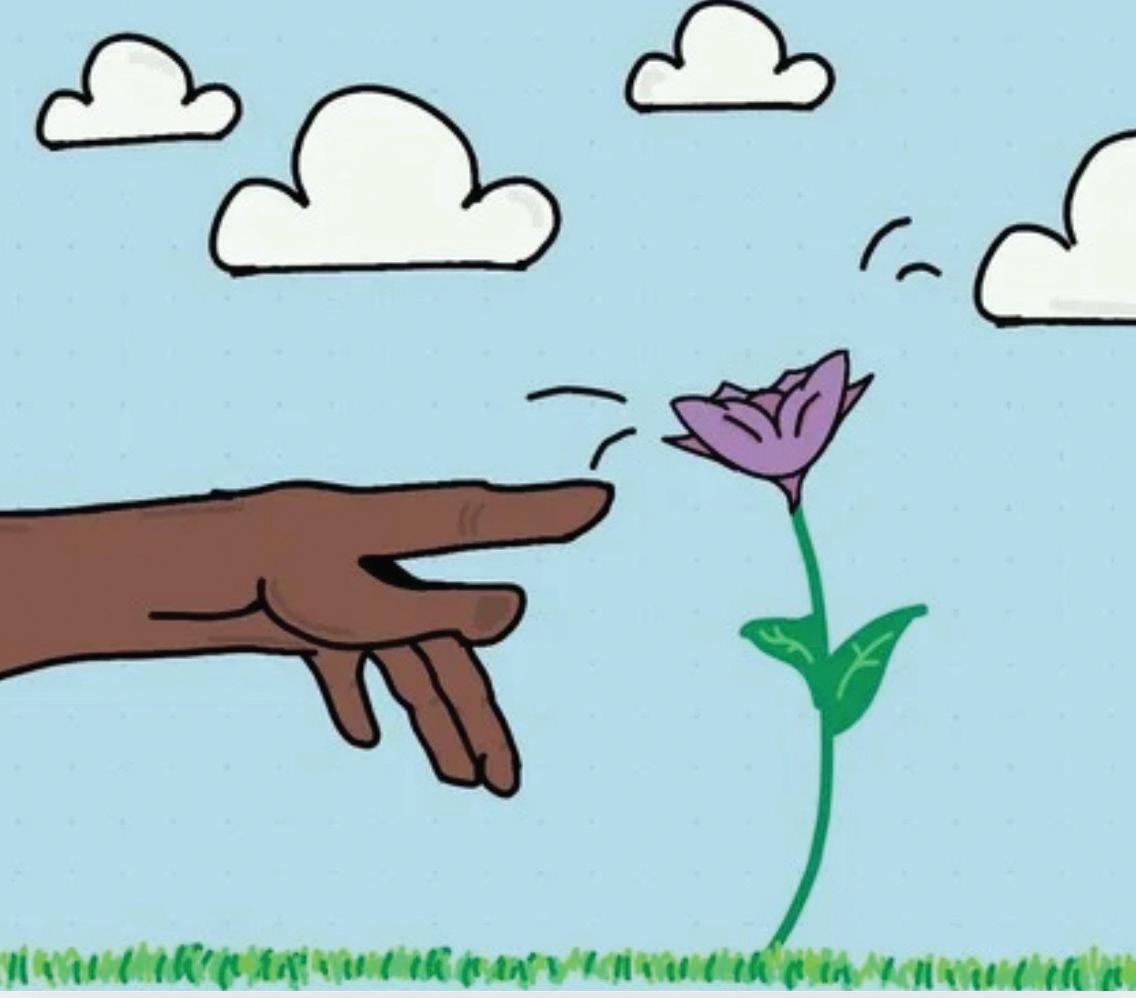
me of all of the pieces to my identity. The unfamiliarity carves the path that guides me into all of the right directions.
Over time the newness becomes normal, and nostalgia evolves into appreciation rather than longing. It shifts from mourning what I may have “lost” through leaving home into gratitude for what I have lived — and what I am becoming.
The dawning of anything unfamiliar is scary, and sometimes the beautiful privilege of having memories leads to a battle of yearning for the past. It is sometimes difficult to remember that all of the worries, all of the off-putting feelings that coincide with change are natural, inevitable and even necessary.
College is the first big and independent step that young adults take toward the future. Whether it meant flying across oceans, driving across state lines or commuting from home every day, it comes with a bittersweet farewell to a life that was once known.
eva.shauriki@pepperdine.edu
Opinion: AI is a symptom of the educational problem
Noah Burton Perspectives Staff Writer
Transparency Item: The Perspectives section of the Graphic is comprised of articles based on opinion. This is the opinion and perspective of the writer.
Artificial intelligence — also known as AI — is everywhere nowadays.
Students use it to complete homework assignments, educators use it to generate assignment material and others use it as a therapist.
The Swedish Prime Minister uses ChatGPT to get a second opinion on highly sensitive governmental decisions, according to The Guardian. Recently, the Albanian government announced the integration of an AI cabinet member to ensure the government is “100% free of corruption,” according to the BBC.
In recent years, artificial intelligence has exploded in popularity, especially with the introduction of large language models (LLMs) like ChatGPT or Google Gemini, which serve as seemingly all-knowing chatbots.
Aside from its significant harms to the environment and to communities local to its data centers, AI has raised significant concerns in the education system. With its ease of access and generative capabilities, academic integrity and the impacts on learning come into question more than ever.
As of 2024, about 86% of students globally use AI in some way, with over 50% of them using AI daily or weekly,
according to a survey conducted by the Digital Education Council. These AI tools include ChatGPT, Grammarly, Microsoft Copilot, Google Gemini, Perplexity and others.
Using AI like ChatGPT allows students to put less effort into classwork, as they can offload the work to the chatbot. Students engage less with the material, thus having less opportunity to learn practically.
While I’m sure many reading this were told the purpose of college is to learn, public opinion on college education has been changing, and it’s not for the better.
The costs of college education have been increasing since 2006, by about 41% for private universities in the U.S., adjusted for inflation, according to U.S. News & World Report. College debt has also been rising, with average student loan debt in 2024 being $38,375 compared to $27,759 in 2014, according to Education Data Initiative.
With the cost of college increasing, why would students not want to try hard in their classes to ensure their education is worth the significant investment?
The answer lies in the fact that students are focusing more on what the return on investment of their education is, rather than learning from the experience.
For example, some students justify their AI use for assignments in classes they’re required to take but aren’t passionate about. In an article from The New Yorker, a student who uses AI said he views his use of AI for an art
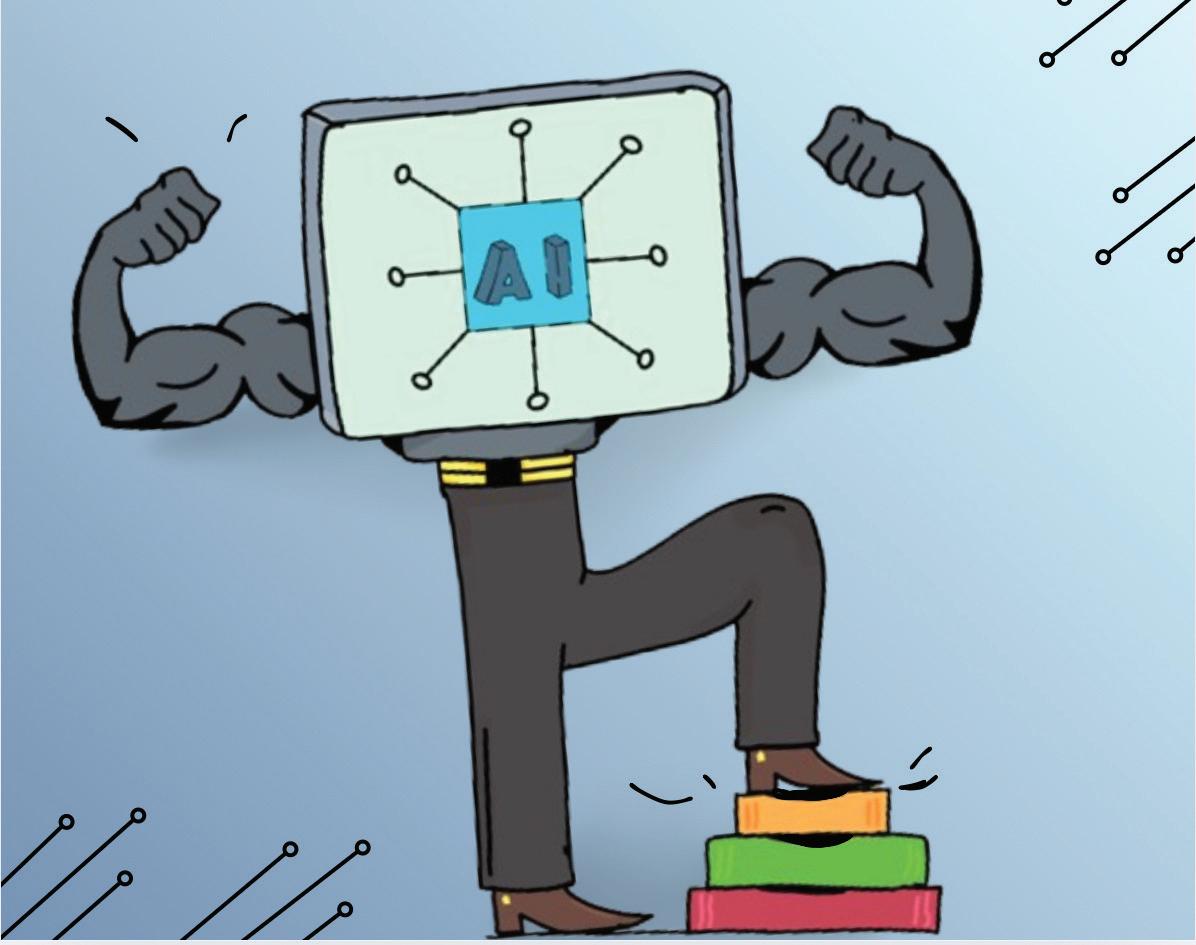
history essay as “a victimless crime,” explaining that “He was just fulfilling requirements, not training to become a literary scholar.”
This student, likely like many others, is only focused on getting through his art history class, rather than learning from what his professor assigned him. After all, those entering the labor force with a college degree, on average, make more money than those without one, according to the Pew Research Center.
“There’s a bit of an ownership that’s required over your education to say, not just what am I getting from this institution, but what do I want to get from this institution?” said Jonathan Koch, assistant professor of English and coordinator of Digital Humanities at Pepperdine.
Many students might think of college more as just getting the degree rather than paying attention to classes. AI only exacerbates the problem, as it makes it even easier to divert your attention to other things.
The problem here isn’t specifically just with AI, but rather that higher education nowadays is easily approachable from this mindset that’s lacking in learning.
Opinion: ‘Courage the Cowardly Dog’ teaches its audience valuable lessons
Tony Gleason Managing Editor
Transparency Item: The Perspectives section of the Graphic is comprised of articles based on opinion. This is the opinion and perspective of the writer.
This past summer, HBO Max removed “Courage the Cowardly Dog” from its streaming platform, according to IMDb. This means the show is no longer available to watch on any subscription streaming platforms.
“Courage the Cowardly Dog” is one of the strangest cartoons I have ever watched. When I went back to rewatch the show a few years ago, there were multiple times where all I could do was stare at the TV screen and think “what am I even watching?” As I dug deeper into the show and watched video essays on it, I started to see the beauty in the show.
The best part of the show is the simple message the show looks to teach its viewers: Courage is not the lack of fear, it’s the ability to do what’s right in the face of fear.
Whenever a villain came to cause havoc, Courage never gave some speech about how he’s not afraid of bad guys and it’s his duty to make sure everyone’s safe, or anything cliche like that. Rather, Courage
was visibly frightened every single episode and made it clear he would rather be doing just about anything else than dealing with this new villain.
Despite this, Courage always did the right thing and saved the day, and that’s what makes Courage so great. Whenever he saw an episode’s respective villain attack his owner Muriel, Courage usually utters his signature line, “the things I do for love,” before ultimately saving the day.
Courage’s actions are something a lot of us can learn from. Life, like the show’s villains, can be terrifying, but that’s not a reason to be too scared to act. When life gets challenging, we should remind ourselves of why we’re doing what we’re doing — in Courage’s case, for Muriel — and keep pushing on.
Another aspect of the show I appreciate is when Courage is having to deal with the show’s villains, the vast majority of the time Muriel and Eustace are the only people he’s saving. While a TV show villain with the power to destroy a city, world or universe does raise the stakes, seeing Courage fight for Muriel can remind us to look out for our own close friends.
Many of us will never have a large impact on the world as a whole, and that’s OK, because we can still have an impact on those who we deeply care about. Even if we aren’t going to go down in the history books as someone who is remembered by everyone,
It’s helpful to remember that on the other side of your educational journey is a team of people there to help you learn.
Koch said there should be a strong sense of trust between students and professors.
“I’m all in this for you as the professor,” Koch said. “In this for you as the student to gain this shaping and forming.”
Even if you are only in college to get a degree so you can get a job, or at least a higher-paying one, I recommend trying to engage with your professors on a human level. The relationships that you’ll create at college are just as valuable as, if not more than, the degree you’ll get at the end of your time here.
While the urge to make your assignments easier just for a better grade is strong, remember the professors are reaching out through their assignments to help you try to learn something useful for application outside of class. AI will cut off this opportunity to learn, and your education will continue to lose its value.
noah.burton@pepperdine.edu

we can be remembered by those whom we love.
All Courage wanted to do was keep his family and himself safe, so if you’re ever wondering if there’s a point to all of your actions, look at the people around you. If you’re making the lives of your fellow peers and close friends better — similar to what Courage did — then there is a point and you are leaving an impact.
I don’t know how getting the rights to have a show on a respective streaming companies platform works, but one of these companies should do the general public a favor and bring back the opportunity to learn these great lessons from “Courage the Cowardly Dog.”
Since October is here and people will be in the mood for something horror-related, consider ordering a DVD and embrace the weirdness of “Courage the Cowardly Dog.” You might learn a thing or two.
anthony.gleason@pepperdine.edu
Letter to the Editor: Everyone needs to chill out about college rankings
Allison Lincicome Class of 2026
Editor’s Note: Opinions expressed in letters to the editor are those of the author, and publication in the Graphic in no way represents an endorsement of any opinions published. This space is provided to allow public response and commentary on articles and issues that are covered by the Graphic and important to its readership.
With the recent release of the 2026 U.S. News and World Report’s College Rankings, the conversation surrounding Pepperdine’s fall from the top 50 has reemerged. For those uninitiated freshmen, now is the time of year when all the upperclassmen remind each other that we were admitted when the ranking was high and the admission rate was low, as we allow a national publication to unilaterally dictate what we think we’re getting out of our education.
However, every student I talk to seems to have no idea what criteria U.S. News uses; we all seem to accept this ranking as the single determinant of whether or not future employers will look at our degree and call it worthwhile or not, without stopping to consider how they’re getting these numbers.
For those content to complain about the rankings without understanding them, feel free to stop reading and save yourself some time. I, however, had homework I wanted to avoid, so I spent a solid couple hours googling every variation of “Pepperdine,” “U.S. News” and “college ranking criteria” I could think of.
First important reminder: U.S. News allows for ties in the rankings, according to the 2026 U.S. News and World Report’s College Rankings. So, while it seems like we fell four spots below last year, and four more from the year before, we’ve really dropped two ‘levels’ — from a tie at #76 between multiple schools, to a tie at #80 between multiple schools, to a fourway tie at #84 this year. There isn’t some drastic drop in quality, just minor changes that bump between different groups.
Second important reminder: U.S. News changed their ranking criteria a few years ago, starting with the 20232024 ranking. This correlated to Pepperdine’s drop from #55 to #76. Since then, given tied rankings, Pepperdine’s rank has stayed relatively stable.
This crazy shift speaks more to the arbitrary nature of rankings than any actual quality changes on Pepperdine’s part; slight changes to evaluation standards resulted in fluctuations for many schools — Pepperdine Newsroom even mentioned other schools when writing about this ranking shift. But maybe this criteria is more fitting of what we should all be looking for in our college and our administration should be working to improve in the newly-valued metrics; so what is U.S.
News grading colleges on?
Some of the criteria U.S. News ranks on makes perfect sense: graduation rate, first-year retention rate, which is how many students return vs. transfer to other schools and borrower debt, which is how much we’re all taking out in student loans and college grads earning more than high school grads. Side note: neither acceptance rate nor yield rate factor into the ranking at all, so no need to get ruffled feathers about our admission rate being over 50%!
Other criteria are less straightforward — “peer assessment” constitutes 20% of the school’s overall ranking, and a total of 15.5% is dedicated to “graduation rate performance,” split between all students (10%) and Pell grant recipients (5.5%). So naturally, I went down a rabbit hole.
Graduation rate performance is a four-year rolling average that compares a university’s graduation rate to what U.S. News predicted it would be. Their prediction is formed from a statistical model that inputs the freshmen class’ SAT/ACT scores, their high school class ranking, percentage of Pell Grant recipients, spending per student and number of STEM degrees awarded — because I guess my Biology degree is just incomprehensibly harder than everyone else’s in a statistically significant way.
In some ways, this feels like double-counting the same factors they separately rank: standardized test scores, Pell Grant recipients and spending per student each have their own category. Why develop a separate, over-complicated way of including those factors in the evaluation of a college again? Additionally, Pell Grant graduation performance compares the graduation rate of Pell recipients to the graduation rate of the whole student body, which once again accounts for the graduation rate twice in this convoluted ranking system.
Peer assessments, too, seem reductive in execution. U.S. News bases 20% of a school’s ranking off of a survey that they send out to “top administrators at other institutions” — top administrators being presidents, provosts, deans of admission, etc., and other institutions being ‘all’ other national universities — said survey simply asks each participant to rank other universities on a scale from 1-5 on “overall academic quality,” according to the U.S. News and World Report. That’s it.
In this “Do you like me? Check yes or no” of a ranking criteria, only 30.8% of the 4,591 officials who were sent the survey responded. For those who haven’t taken a math class in four years (I support you), that’s a grand total of 1,414 (.028 — poor 0.028 of a person, whoever that was) people deciding 20% of every single college’s ranking on the list. In fact, this response rate is down from last year’s 39%, about a 21% decrease — yes, that is how the math works, you’re just going to have to trust me on this.

Image by Betsy Burrow | Creative Director
Beyond my confusion with about 35% of the ranking scores, some of the data U.S. News uses are from years before any of us even started attending Pepperdine. Borrower debt, constituting 5% of the score, is calculated with data from 2019–2021.
One could argue that this artificially boosts Pepperdine’s stats, given recent tuition hikes that likely increased current students’ loans, but either way it’s making this ranking criteria inaccurate. For the category of college students outearning high school graduates, another 5%, their data is from 2019–2020.
However, this data is from alumni who graduated five years prior, or the class of 2015. Data on financial resources per student, 8% of the overall ranking, is taken from 2022-2023, according to the U.S. News and World Report.
This led me to another question: what exactly is included in financial expenditures on students? U.S. News defines this category as evaluating an institution’s “total expenditures on instruction, research, public service, academic support, student services and institutional support…only ‘functional’ spending that can be associated with academics is included, while other spending such as housing and athletics is excluded.”
Yet again, we’ve reached some vague categorization for which U.S. News has not, to my knowledge, released the behind-the-scenes of. As such, everything that follows on this topic are my assumptions of how certain expenditures are classified.
That being said, I do love assuming things, so here goes: many of Pepperdine’s major expenditures in recent years — acquiring the Chateau d’Hauteville, construction on the Mountain and any costs associated with starting up the Kyoto program — are unlikely to be classified as functional spending by U.S. News, at least in majority.
The Chateau is primarily housing, and the Mountain seems to primarily be a stadium, so that would qualify it under athletics. Depending on how U.S. News is getting their information, they’re not classifying these things — which do/will improve student academic experience here — as the kind of spending that would boost our ranking.
By their classification, much of Pepperdine’s abroad expenditures — upkeep of the houses in London, Heidelberg, Florence and D.C. plus the payments to homestays in Buenos Aires — likely fall under the disqualified “housing” category. Pepperdine does spend $10.6 million yearly on research, according to Carnegie Classification of Institutions of Higher Education, so this category likely isn’t something singlehandedly tanking our rating anyway, but it raises an important reminder: rankings aren’t everything.
Yes, I know, it’s cliche and exactly what someone whose school is no longer in the top 50 would say, but it’s
also true — even if you don’t believe it when your professors tell you that grades don’t define you. Ask yourself an honest question: did you come to Pepperdine because it was in the top 50? Because I’ll tell you right now, if that’s the only reason you came, you could’ve picked at least 49 other colleges — and realistically more, considering multiple schools tie for #50.
When I ask people why they came here, I usually get one of four answers (in no particular order): the abroad programs, the beach, the faith-based education or the small class/school size. Apart from student-faculty ratio — ours is 12:1, within the range of ratios of top 30 universities — none of these factors are included in our ranking — though they should be, we have to be at least top five for beach. The things we came here for, that we love the most about this school, do not relate to what U.S. News thinks is important.
Please don’t misinterpret this whole spiel as me trying to say that actually, our University is No. 1 in our hearts and there is no way to improve anything here at all. Obviously, we’re not an Ivy League school. But to stake Pepperdine’s value, and by extension the value of the time you’ve dedicated to earning your degree here, on a single list that I’m 90% sure no employer is looking twice at, feels a little reductive and absurd.
If you’ve studied on the beach on the weekends, skipped your surf class some weeks because “the ocean will still be there tomorrow,” had dinner or Bible study at your professor’s house with the rest of your classmates, studied abroad in an actual castle, or (in my case) gotten to do research with the Dean of Seaver College as a random undergraduate student because he still runs a lab while doing…whatever it is deans do…then you’ve appreciated something about Pepperdine that being able to say “I go to a top 50 college” doesn’t come close to accounting for.
And hey, if after all that you still want something to complain about, I don’t hear anyone talking about The Wall Street Journal’s list — on there, we’re #145.
Allison Lincicome (‘26)
LIFE & ARTS
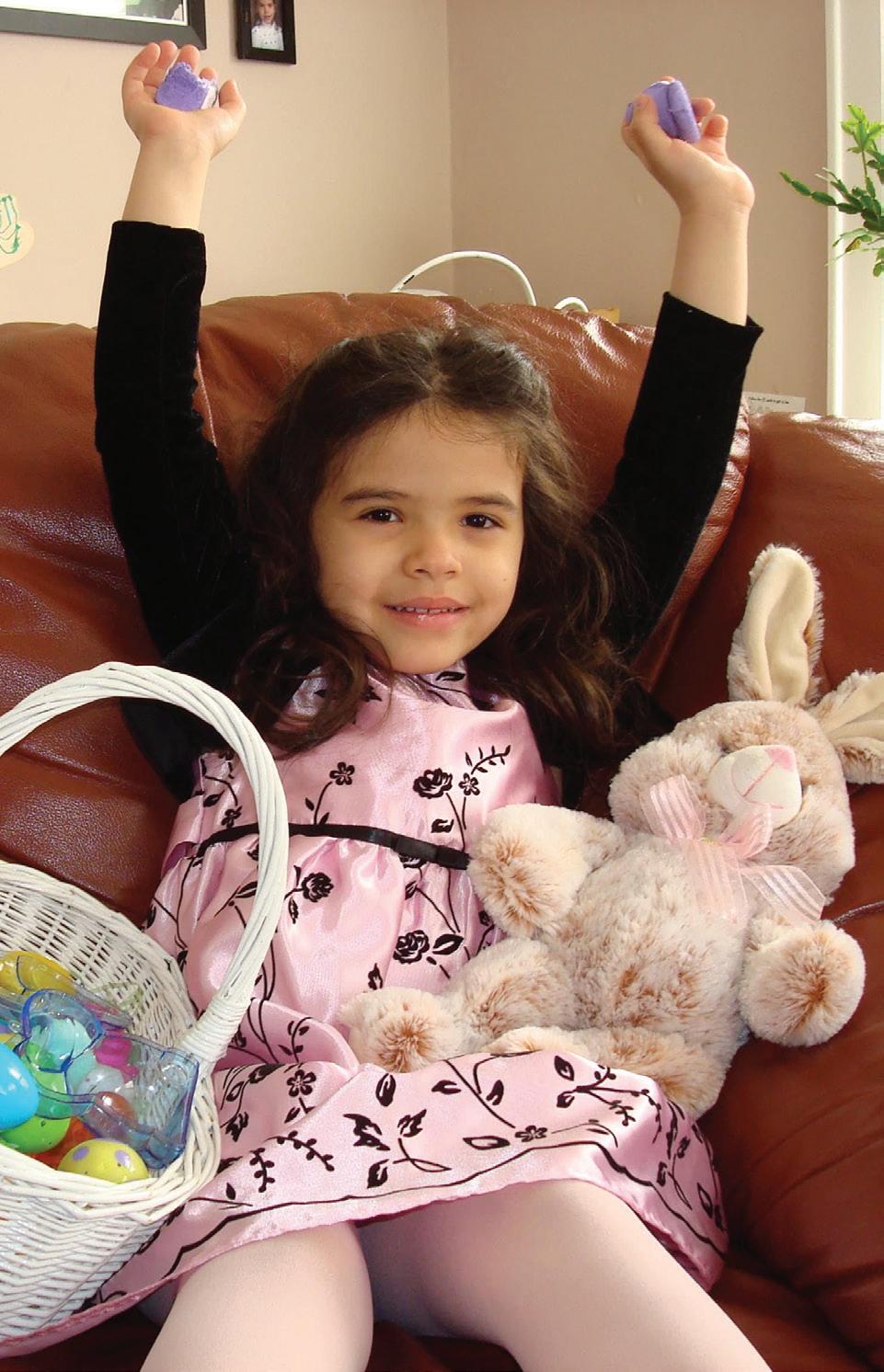



‘Nostalgic for my childhood’:
Students reminisce about treasured childhood possessions
Alicia Dofelmier
Associate Editor & Assistant News Editor
Childhood possessions, such as a baby blanket or stuffed animal, are often considered people’s most treasured possessions.
These childhood possessions have watched their owners grow up and been there as a source of comfort.
Pepperdine students said they consider their childhood possessions as some of the most
important items they own.
Junior Adri Sahakian said she has had a stuffed animal named Lamby for about 17 years.
“She’s technically watched me grow up, and the thought of that makes me nostalgic for my childhood,” Sahakian said.
“I’m happy to have something like that still around.”
Sahakian said time definitely plays a role in why
Lamby is so important.
“She [Lamby] sits on her two back legs and looks up at the world in wonder with beady black eyes and an open mouth,” Sahakian said.
Senior Milena Velez said she has a bunny named Bunny who has been around for about 16 years and that Bunny has always been there for her.
her grandmother made.
“My aunt Sheri — who’s really just a family friend — gave him to me for my birthday when I was four and we’ve been inseparable ever since,” Cluck said.
Sahakian said dancing around her house with Lamby is a memory that sticks out to her.
in a Barbie convertible and driving him around my house, singing ‘puppy in a vehicle’ which is a song that I just made up,” Cluck said. “This has since become one of my parents favorite stories to tell.”
Similarly, Velez said she also has a memory with Bunny involving her parents.

“As an only child, I was always lonely,” Velez said. “To cope with this, I developed a very strong attachment to everything. The constants in my life were objects, so I started doing everything with him [Bunny] and never really stopped. I slept with him every night and brought him anywhere I’d spend the night: sleepovers, vacations, etc.”
Senior Annalia Garrett said her most important childhood possession would be the stuffed monkey she had growing up.
“His name was Mono because I’m half Argentine,” Garrett said. “I couldn’t come up with a better name honestly and just named him Mono fully with my little Spanish accent I used to have.”
Garrett said she slept with Mono, took it to school for show-and-tell and was so proud to have this stuffed monkey by her side.
“My memories of childhood are super hazy, but I would carry her [Lamby] everywhere and prance around,” Sahakian said.
The constants in my life were objects, so I started doing everything with him [Bunny] and never really stopped.
Milena Velez Senior
“My favorite memory of Bunny is whenever my dad sets him up,” Velez said. “My dad will often surprise me by placing Bunny in different locations around the house, and many times my dad will ‘tuck’ Bunny into my bed.”
Childhood possessions such as these are important to Pepperdine students, whether that’s due to the memories they hold or how they may feel or smell.
“I’ve had Puppy through waiting in hospice rooms and nightmares, and it came with me to college,” Cluck said.
Design by Amanda Monahan | Currents Editor-in-Chief & Design Assistant
First-year Annabel Cluck said she has a small brown lab puppy named Puppy who is currently wearing clothes that
Cluck said she made up a song for Puppy and would drive him around her house.
“One of my favorite memories of Puppy is putting him
alicia.dofelmier@pepperdine.edu
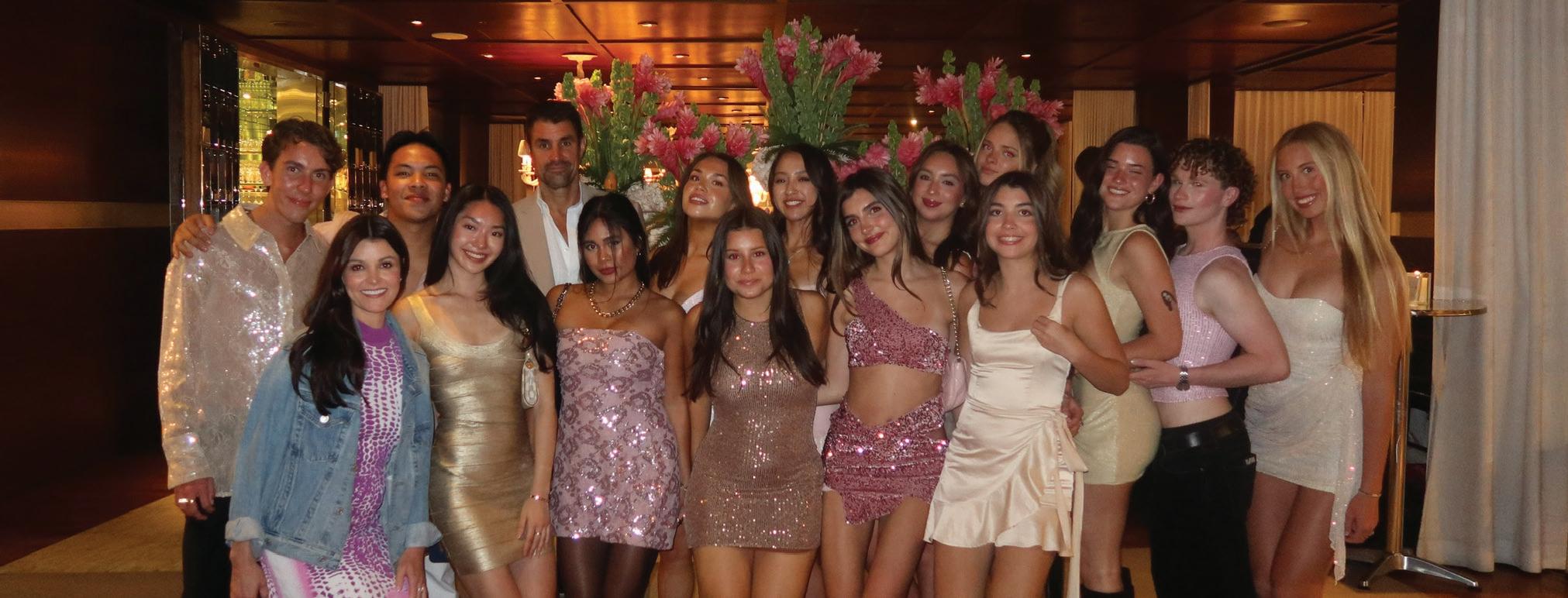
Celebrating life creates an exciting world
Ross Life & Arts Editor
In a world that rarely slows down, sometimes the greatest act of joy is finding a reason to celebrate.
Whether it’s an elaborately planned birthday party or a routine walk with a roommate, students are stepping back from the perceived mundanity of everyday life and carving out moments of celebration.
Junior Anette Ocampo said she tries to find a reason to celebrate every day.
“Celebrating life doesn’t mean you constantly need novelty,” Ocampo said. “I sometimes find myself celebrating the smallest moments.”
The People Who Make Life a Celebration
Although making the most of life and creating an excuse for curated events may be
exciting, sometimes it’s simply the people who make life a celebration.
For Ocampo, she said celebrating life doesn’t require a grand occasion — just the right people.
“When I’m with my friends, we like to just gather in our apartment or wherever we are,” Ocampo said. “You don’t always have to celebrate in big ways. It can be as simple as sharing a meal, laughing together or grabbing coffee in the morning.”
Although senior Sofia Boehm loves an elaborate event and dreams of going into the hospitality business, she said her favorite part of party planning and hosting is watching her guests enjoy the night.
“The actual experience and planning matters a lot less than who you are celebrating with,” Boehm said. “As long as my closest friends and family are there, that’s what makes a celebration meaningful.”
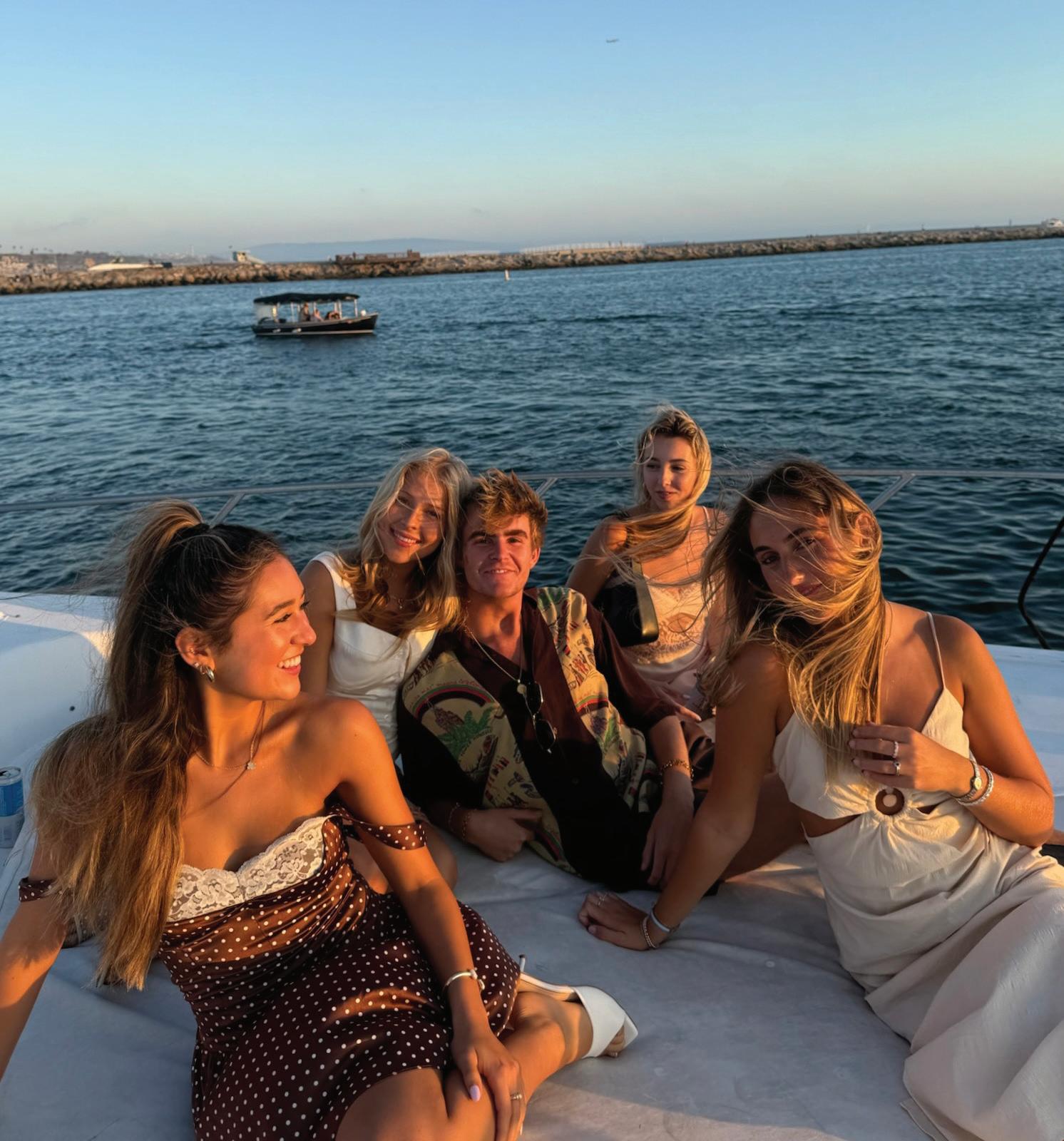
Junior Ben Hoffman said he loves having an excuse to surround himself with his friends and greater community.
“Celebrating is a big part of community,” Hoffman said. “It’s hard to build a community without that aspect.”
Being Extra Makes Life Fun
Sometimes the planning and anticipation makes for a night that will turn into an unforgettable memory, Boehm said.
For Boehm, she said she’s not new to being a little bit extra. For her 21st birthday party, she hired a pastry chef to come and create an assortment of elaborate desserts and pastries. She even made customized T-shirts and temporary tattoos with her face on them.
“It’s so fun for me to be able to plan events because I love seeing my friends have fun,” Boehm said. “I just love going all out and seeing everyone’s reactions.”
Another honorable mention from Boehm’s repertoire of parties she’s planned was a murder mystery birthday party she said she organized with her dad.
“We created an elaborate script and clues,” Boehm said. “It was just so much fun.”
Boehm fully commits to curating extraordinary experiences. Growing up with a father in the hospitality business, she said she inherited a love for throwing elaborate events — and she’s made it an art form.
For her roommate’s birthday, Ocampo said she planned a surprise wake-up call the morning of her birthday and decorated with all of her favorite things.
“We had a whole table that was dedicated to her with her favorite snacks and cake,” Ocampo said. “Then we all just gathered around and reminisced on all the years of us being friends.”
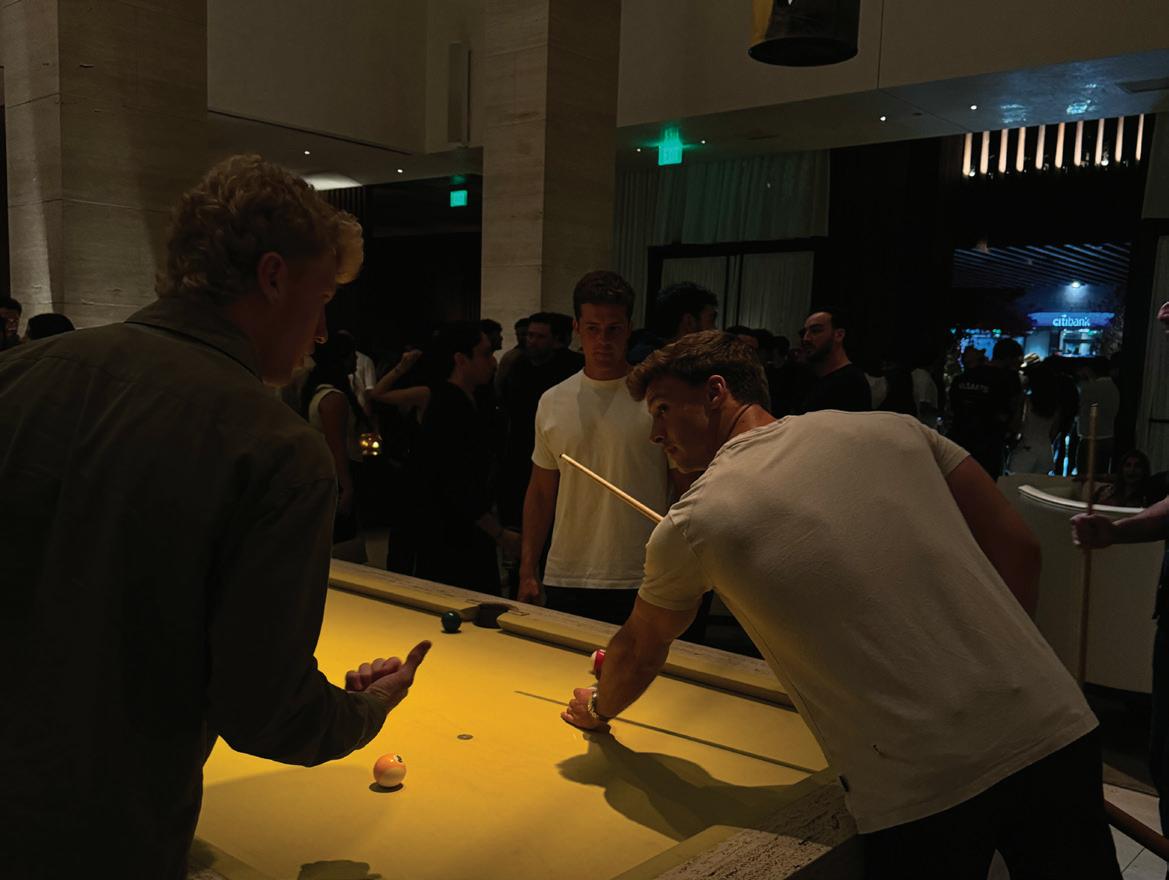
Ocampo said she enjoys being able to see the smiles on her friends’ faces when they realize someone took the time and energy to plan a day that is dedicated to them.
“We might as well go all out and let someone know that they’re loved and seen by others,” Ocampo said. “Being able to celebrate even the small things in life helps us to not be in this instant gratification cycle we humans tend to get caught up in.”
After graduating high school, Hoffman said he and his friends rented a house to commemorate the end of a long and challenging chapter.
“We all got to go to one place and celebrate finishing that chapter,” Hoffman said.
“It was just a surreal moment of realizing that we had all finished something very difficult, and we got to celebrate that together.”
Work Hard, Play Hard
College is an opportunity for students to learn and grow inside and outside of the classroom, but the constant pressure of performing well in school can cause students
to become overworked. Hoffman said having something to look forward to can help with motivation.
“After working hard all week and putting a lot of time and effort into their studies and efforts to be successful, it’s good to celebrate that and be with the community that you work hard with,” Hoffman said.
Ocampo said she enjoys pushing herself in her studies to then be able to relax and enjoy time with friends.
Even if it’s simply looking forward to having a nice dinner, Boehm said she tries to treat herself to something special after she overcomes a challenge.
“After a hard week of work I like to reward myself with mini celebrations like shopping or getting a nice dinner,” Boehm said.
haylie.ross@pepperdine.edu
PIT celebrates 25 years of improv comedy
Alexa McGlathery Assistant Life & Arts Editor
The Pepperdine Improv Troupe (PIT) is back for another season of laughs. After adding 15 new members, PIT is gearing up for their next show Oct. 4.
Through a lively audition process filled with skits, games and team-building activities, PIT brings together performers ready to create comedy and community onstage.
“It’s a really good year and a really good team,” said Reece McDaniel, senior and PIT president.
More Than Just Acting
For the “players,” also known as the other actors in the troupe, PIT is more than just a community of actors — it’s a space to grow, gain confidence and push past fear.
“PIT has helped me outside of the acting world, just being more confident in myself and confident that I’m not going to make a fool of myself,” said Eden Gamble, junior and PIT vice president.
The troupe encourages creativity by teaching members how to build entire scenes
from a single prompt and bring unique, funny characters to life, McDaniel said.
“I’m really drawn to character work,” said Isabel Klein, PIT director and professional actress.
“We really, as audience members, want to attach to the character and the person, and then it makes everything else more funny.”
Klein has been in the role of PIT director for five years. She said she emphasizes character-driven improv. Klein is also preparing to join the Sunday company at The Groundlings Theatre, a sketch comedy theatre that has been entertaining LA audiences for over 50 years, according to The Groundlings.
In addition to building confidence, Gamble said PIT also fosters new friendships and relationships.
“Everyone’s really kind and funny and it’s a safe space for mistakes and successes,” Gamble said.
Gamble joined PIT her sophomore year and was recruited by McDaniel.
“I love the troupe,” Gamble said. “We’ve gotten super close.”
The troupe has also built a strong connection with Klein — so much so that Klein said they shifted their weekly

rehearsal schedule so she could continue coaching them.
Up and Coming
This year marks the 25th anniversary of PIT and for Waves Weekend, PIT is planning a special performance.
“We’re bringing back a bunch of our alumni and we’re going to perform an alumni show with previous PIT members and the alumni members,” McDaniel said.
The show will take place Oct. 4 in Elkins Auditorium at 2:30 p.m. The performance will rely on audience suggestions, making every scene unique and spontaneous, McDaniel said.
One of the biggest challenges the actors face is being vulnerable while being spontaneous, Gamble said.
“The most challenging part about being in PIT is just doing things that you wouldn’t be comfortable doing in public,” Gamble said. “It’s one thing to
perform in front of all of your fellow PIT members, but it’s another thing to perform in front of all of your peers and just not be too in your head.”
But through the awkwardness and discomfort comes hilarious scenes and unforgettable memories.
“I love PIT and no matter what scene I’m doing, I’m having fun,” Gamble said.
alexa.mcglathery@pepperdine.edu
Reading transports students into dream realities
Sophie Rogers Life & Arts Staff Writer
Whether it’s a fast-paced thriller, a sweet romance or a classic — reading offers more than just entertainment. It is a gateway into another life, reality or timeline.
Summer reading is a habit many students said they adopt to keep their minds engaged and entertained during their break from school.
“My favorite part about reading is that it makes me forget what I have going on and fully immerses me into the book,” sophomore Lucia Rasi said.
Learning to Love Reading in Class
For some, reading for school can feel like a chore. Students said it can be hard to get invested in a book they didn’t choose.
“[Enjoying reading in school] depends on what the assigned reading is,” sophomore Sienna Coats said.
Coats said she has tried to enjoy class-assigned readings, but they are much harder to get into. Often, students see reading as dull, but it doesn’t have to be that way. Coats said some people dislike class readings, and some love them.
Senior Reagan Wexelman said she loves reading for her English class, especially when it’s a classic.
“I like when [class-assigned] readings are complex enough that I can really ponder the ideas, work through them and apply them to other things,”

Senior Reagan Wexelman reads at a coffee shop July 20 in Lafayette, Calif., while having breakfast. Wexelman said she read eight books over the summer.
Wexelman said.
Regardless of genre preference, Wexelman said it can still be challenging to focus on a book assigned from one of her classes. Even though she prefers classic literature, she still struggles to enjoy assigned readings, as sometimes they can feel overwhelming.
The Magic of Books
Books can remove our minds from the physical world and shift our brains into a reality that we can paint as our own.
“I like reading because I can
imagine it however I want,” Coats said. “I can give entire background stories to the characters.”
Many readers feel more attached to a book if they can relate to a character, Rasi said.
“When you find books you relate to in some way, it makes you more engaged,” Wexelman said.
Finding a book that students relate to might just be the key to enjoying a casual read, Rasi said.
Summer Reads
So, what are the best summer reads?
It depends on preference.
Coats said she recommends thrillers, her favorite being “The Silent Patient” by Alex Michaelides.
“It has a plot twist you would never see coming,” Coats said. “They did such a good job putting the storyline together.”
Coats said she couldn’t stop herself from turning the next page. She never knew what to expect and was on the edge of her seat throughout the entire book.
If the vibe is romance, Rasi said she recommends “Normal People” by Sally Rooney.
She said the story includes emotional elements, but a sweet and unique storyline. This is not the book to read for someone looking for a happy ending.
More traditionally, Wexelman said she recommends “East of Eden” by John Steinbeck as her favorite read of the summer. She said the book left her thinking about it for months following.
“I was in Sequoia over Labor Day weekend, and I finished my homework, so I started journaling and reflecting about ‘East of Eden,’” Wexelman said. “I finished it a while ago, but I was still thinking about it and trying to work through the ideas.”
sophie.rogers@pepperdine.edu



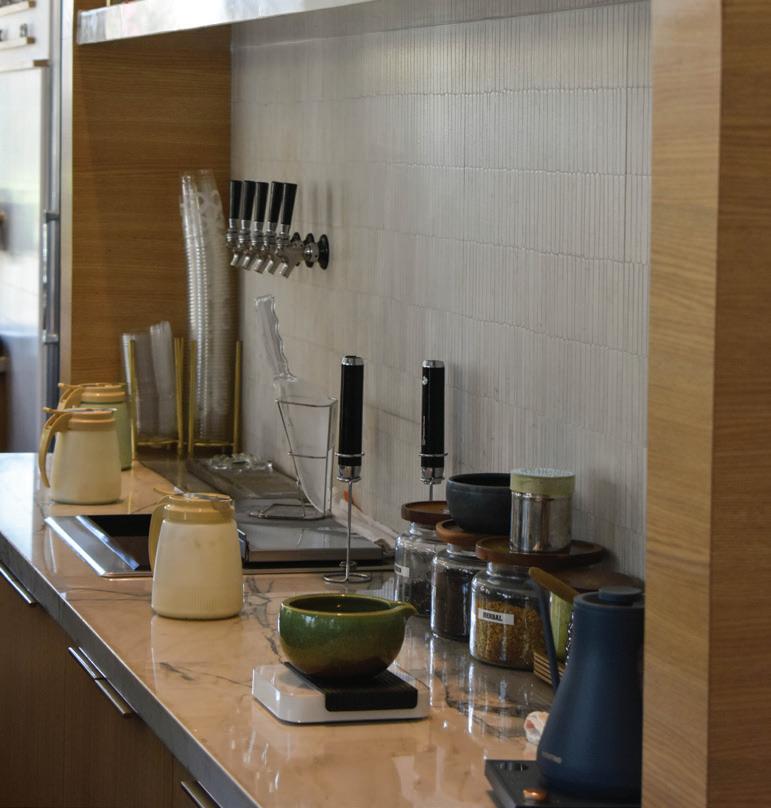
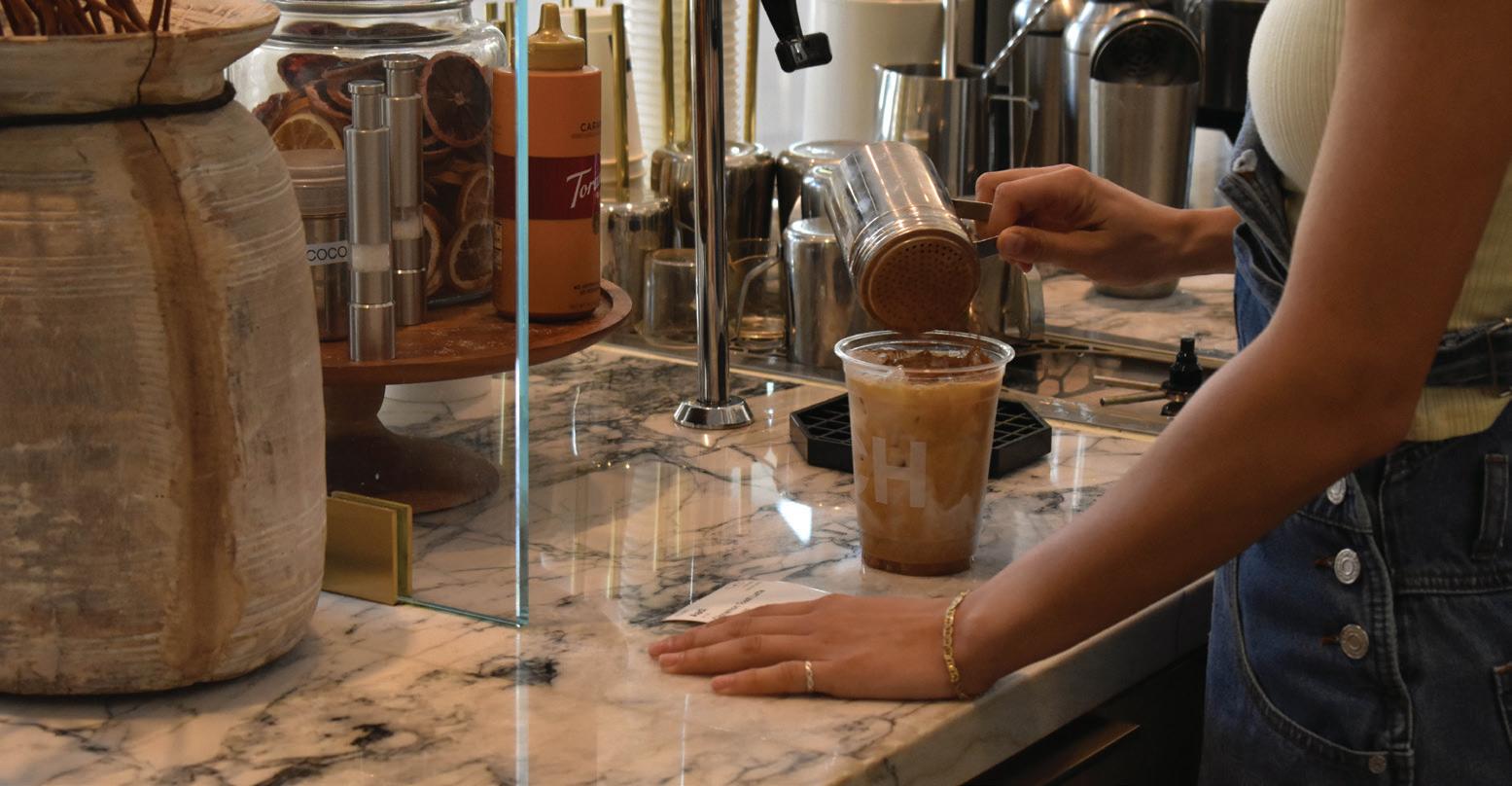
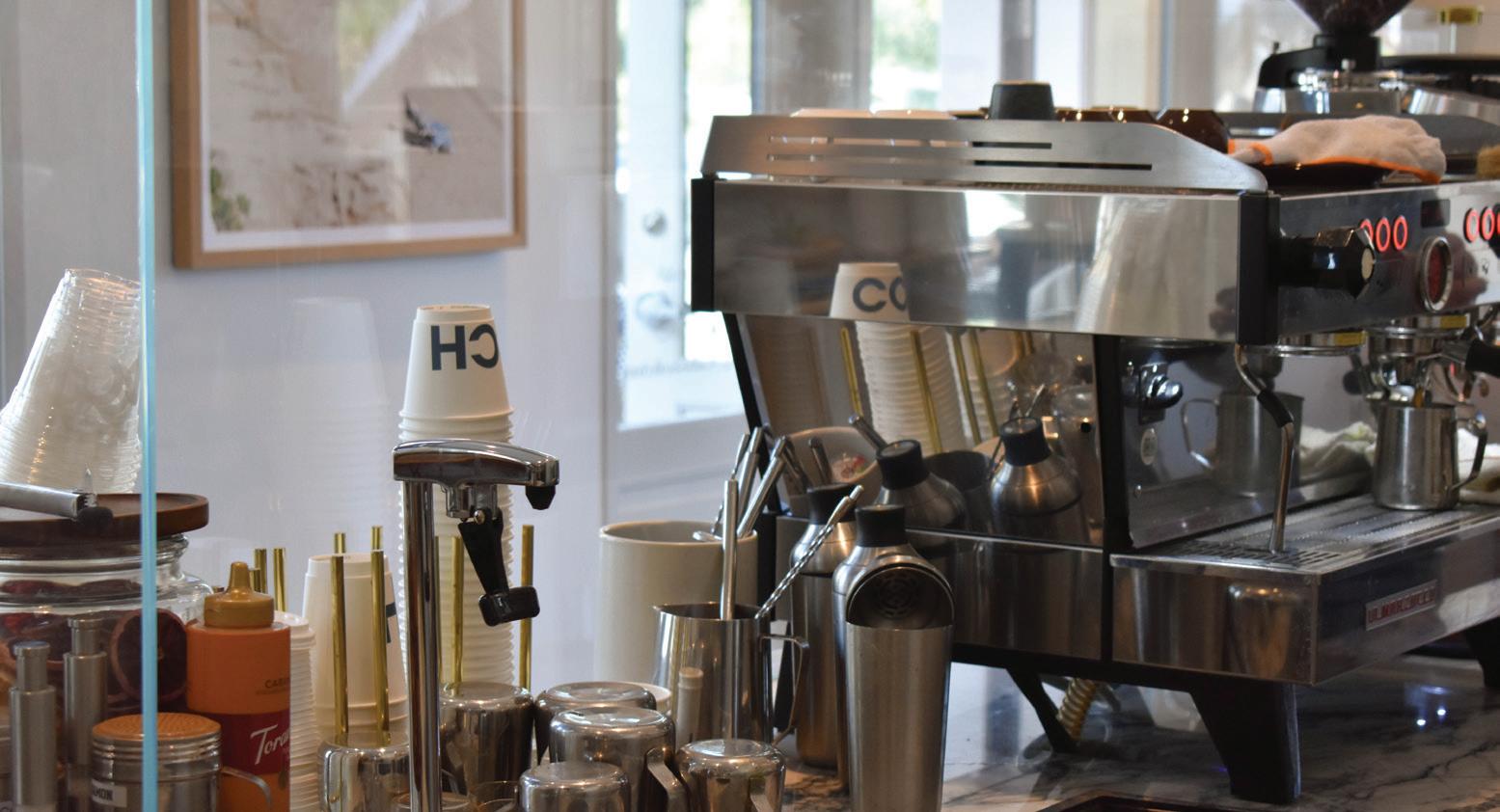
Calabasas Coffee House brews community
Amanda Monahan Currents Editor-in-Chief & Design Assistant
After moving to town a few years ago, Calabasas local Ian Metrose said he felt something was missing — community.
This desire to build community led to the opening of Calabasas Coffee House (CCH) in February.
“Hospitality was definitely in my DNA and we really felt there was a need in this area for what we’re bringing,” Metrose said.
“Later in Life”
Metrose worked in the entertainment industry for 30 years, but said he and his wife always had a dream in the back of their minds for “later in life.”
While taking a walk through the neighborhood one day, Metrose and his wife saw a space available near The Commons at Calabasas. Suddenly, “later in life” felt nearby.
“My wife and I have always kind of dreamed about having a coffee place later in life, after our careers,” Metrose said. “And later in life is now.”
Upon moving to Calabasas, Metrose said he realized it was a much smaller town than most make it out to be. Because of this, it only felt right to open a coffee shop with a focus on community.
Through his time working in the entertainment industry, Metrose said he felt prepared for the transition into the hospitality industry.
“Community was built in our DNA,” Metrose said. “The one thing we wanted was to create a community. I mean, if you sat here for a day or two, you would start recognizing people.”
Building Community
Metrose said the past seven months have been a wonderful blend of learning, discovering and community-building.
One way Metrose and Calabasas Coffee House have built
community is through CCH Run Club, a weekly running club that takes place every Sunday morning at 9 a.m. Metrose said seeing the reactions from the community has touched him in a positive way.
The one thing we wanted was to create a community. I mean, if you sat here for a day or two, you would start recognizing people.
Ian Metrose Calabasas Local
“We’ve had a lot of people come up and tell us, ‘Thank you so much, this really sort of saved my life,’” Metrose said.
“I’ve noticed there’s a lot of heart in the world.”
Calabasas local Niki Lytton comes to Calabasas Coffee House three times per week to work remotely. She said the vibe at CCH is unmatched compared to other coffee shops in the area.
“I love the big windows, the white furniture — it feels very bright and open,” Lytton said.
Lytton sometimes brings her golden retriever to the shop with her, which is when she has noticed the biggest sense of community. Whether interacting with people she’s seen in the shop before or seeing customers who know her dog by name, Lytton said she appreciates the community CCH has built.
Besides the CCH Run Club, Metrose said the coffee shop also holds occasional puppy adoptions and has a rewards program for regulars. However, the community-building goes further.
In the center of the indoor seating area, customers are invited to sit at a large wooden
table with eight seats. Metrose said the purchasing and placement of this table was intentional.
“We made one big table in the middle so that people can sit and talk to each other,” Metrose said. “We have conversations happen here all day from people that never met each other, and that’s been the greatest thing about this community.”
Both Metrose and Lytton said their favorite drink on the menu is the Japanese brown sugar oatmilk latte, which the shop has on tap due to its popularity.
Whether it’s for a strawberry matcha latte or a conversation, Metrose said he welcomes all members of the community to find a new sense of community at CCH.
amanda.monahan@pepperdine.edu
Women’s Swim and Dive chases victory
Nina Fife Sports Editor
Dominance in the water isn’t new for Pepperdine’s Swim and Dive team – it’s becoming program tradition.
After securing their third conference title in the past four years with the Mountain Pacific Sports Federation (MPSF) championship, the Waves want to continue building the legacy down at Raleigh Runnels Memorial Pool.
“We’re just very fortunate, and we are very grateful that we’re able to keep doing this and do it at such a high level,” Head Coach Ellie Monobe said. “It’s going to be a showstopper year, I can already feel it.”
This Year’s Focus
Monobe said one of the reasons she has high expectations for this season is because her squad is senior-heavy. There are 13 seniors graduating at the end of this year, and it’s a special group for Monobe in her fourth year as head coach.
“This class was my first fully recruited, from day one class,” Monobe said. “It is very bittersweet. It is a reminder of how far we’ve come.”
Before Monobe says goodbye to this year’s seniors, she said she’s excited to see how the year unfolds for them. The coach feels confident in her senior leaders, as they are the ones who have set the tone for the program’s culture and withheld it through major milestones.
Monobe said one of these seniors is team captain Anna Ryan, who swims the 50yard freestyle, 100-yard freestyle, 100-yard breaststroke and relays.
“Anna has been an integral part of our team,” Monobe said. “She just embodies what a student-athlete should be here at Pepperdine, both in the classroom, in the pool and also in her life and community.”
In her final year as a Wave, Ryan said she wants to lead her team to more success in the water – whether that be on the diving boards or off the block. While swim and dive can typically be viewed as individualistic sports, this year’s team is focused on being
just that – a team.
“It doesn’t take just one swimmer, it’s a team effort,” Monobe said. “We really focus on that. Having that familial kind of support – on the deck, in the water, in the locker rooms, in the community – it really elevates our program.”
This team support comes in many ways, shapes and forms. For Ryan, she said it looks like supporting her teammates in their heats while giving her all in this final year.
“I’m just trying to leave it all out there, leave every ounce of my mind, body and spirit in this pool, and focus on the dayto-day, soak up all the memories,” Ryan said.
Team bonding has been a huge part of this year’s program, Ryan said. Whether her team is pushing each other in the weight room or in the classroom, they are all sticking together and showing up for one another.
“They’re basically this huge family,” Diving Coach Monique Demaisip said. “They really get behind each other and support each other, which I think creates this team environment in such individual sports. Their support and that energy is always what leads to success.”
This support is built around the team’s values for this year. As the program tries to build off their athletic and academic success from last season, Ryan said they have three pillars they rely on.
“Courage, tradition and presence – those are the three,” Ryan said. “It’s really about showing up, working hard and showing them that we’re ready.”
The seniors aren’t the only integral returners for the Waves this year. While the swimmers and divers do the work in the water, the program’s coaches are driving their team to success.
Monobe earned MPSF Swim Coach of the Year honors after capturing the conference title last season, according to Pepperdine Athletics. Demaisip earned the MPSF Diving Coach of the Year honor, as well.
Assistant Coach Dan Marella has also been a huge part of the Waves’ success, Monobe said. Marella has been crucial
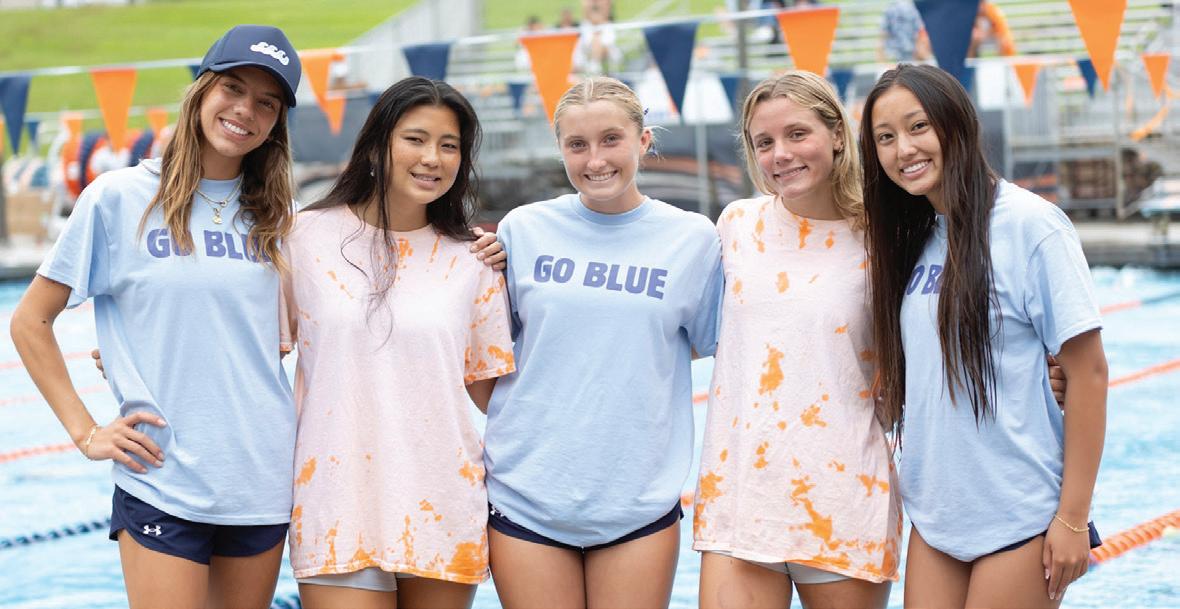
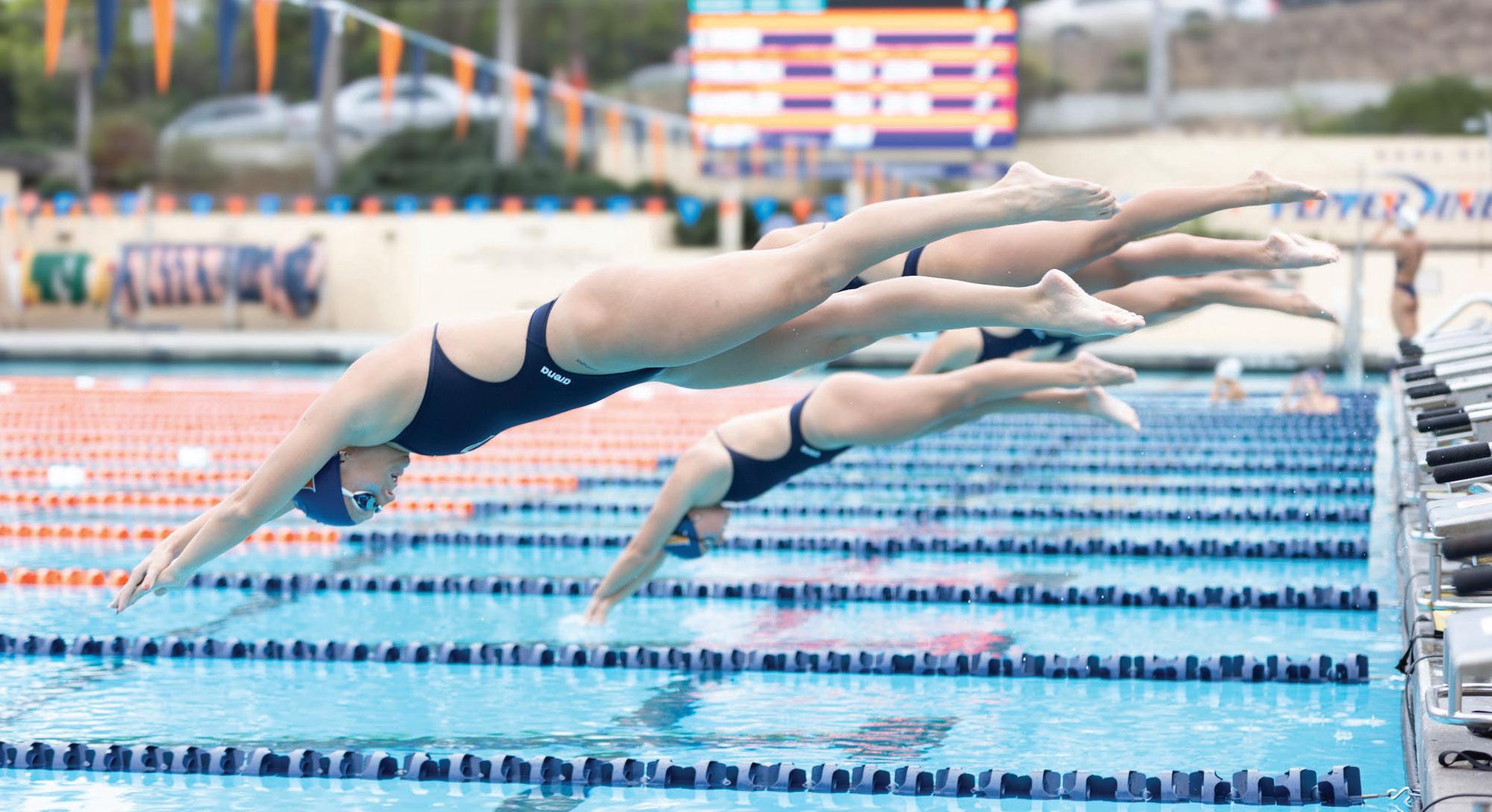
in the recruiting process, helping to bring commits to Malibu that continue building the culture.
Many of these recruits are making their waves in the pool this season, as the team spots six freshmen on the roster this year. While the youngsters continue to settle into their new college life, Monobe said she’s already liking what she’s seeing.
“We’re very excited to see all of them kind of come into the fold,” Monobe said. “We’ve kind of told them that they need to make an impact right away, and they’ve shown that.”
First Meet, Early Success
The team held their first meet of the year Sept. 27 down at Raleigh Runnels Memorial Pool for their annual Blue & Orange Intrasquad Meet.
Pepperdine’s team split into different squads for the school’s respective colors. While the Blue team came out victorious, the event proved to be an overall success for the energy it brought out.
“Swimming and diving is so individualistic, but when you can have that energy on a full day, it just really feeds into the competition,” Monobe said.
The event kicked off with one-meter diving. The diving squad has five representatives, but only four competed with senior Vivian Vallely out on injury.
The other four competitors were made up of three seniors and one freshman. Vallely earned MPSF Diver of the Year honors last season, according to Pepperdine Athletics, but her teammates are helping to support the team while she recovers.
“It’s a great balance,” Demaisip said. “We’re already off to a good start, a stronger start than previous years.”
While the dive team dynamic has been a bit of an adjustment across the classes, Demaisip said her team is thriving. The seniors are able to provide mentorship to their
freshman teammate while also being pushed to work on cleaner dives.
“It was my first Pepperdine meet, and it was a lot of fun,” freshman diver Jackie Johnson said. “I was super excited to be able to get up on the boards and compete for the Blue team and the Waves in general.”
Johnson was the top diver of the day, posting a final score of 227.80 through six dives. She was closely followed by senior Amanda Wong, who scored 227.70.
“The power is there, the comfort, comfortability and even confidence at this point in this year, I would say, was there,” Demaisip said. “That was pretty exciting to see, and it makes me excited for the rest of the season.”
The rest of the meet was focused on the 14 swimming events. Monobe said there’s always room for improvement, but she is proud of what her team did in the water.
“I thought we had some great swims from our returners,” Monobe said. “It shows the athletic depth and also the leadership coming from our returners.”
One of these standout swimmers of the day was Ryan, who won the 50 and 100 free while being on the winning 200 medley and 3x100 free relays.
“We graduated a very elite sprinter last year, and Anna got a chance to spend a lot of time working with her and under her tutelage,” Monobe said. “It’s nice to see Anna step up and take over her roles on the relays and also just dominating our sprint events.”
Junior Layla Busquets was also a notable swimmer of the day, Monobe said. She won the 50-yard backstroke as well as swimming for the winning 200 medley team.
“She’s looking very sharp and swimming in the fly and the backstroke, especially her backstroke,” Monobe said. “It’s been really promising and exciting to see our sprinters perform at that level already.”
The underclassmen had
great showings for the Waves in their first meet of the season. Sophomore Emma Guglielmello was the 800 and 300 free champion, with fellow sophomore Sophia Ware winning the 150 fly by almost two seconds and a time of 1:35.15. Ware was also a part of the winning 200 medley team with Ryan and Busquets.
Freshmen Sophia Blietz and Aliyah Fan brought in some points for the Orange team. Blietz was the 150 back champion with a time of 1:32.47, while Fan won the 50 butterfly and 150 free.
While posting some good times is always a positive of the meet, Ryan said the main goal is always to improve.
“It’s about working through the kinks, so then when we get to next week, we’re ready to go,” Ryan said. “I thought it was a great performance across the board, so I’m feeling good.” Every day brings new challenges, perspectives and success. As the team takes each day as it comes, the underclassmen are soaking up this final season with the Class of 2026.
“We are senior-heavy this year, so I just want to take in and learn as much as I can from the leaders that we have on this team,” Johnson said.
The team will host the Rodionoff Invite Oct. 3-4 to kick off the season. Instead of being divided to compete against each other, the Waves will work together in an attempt to start their season off on the right foot.
“We expect big things this season,” Monobe said. “Hopefully keep a lot of wins here at home and go into conference with a lot of grit and do the best that we can.”
Hotshots: MLB award predictions
Marcos Lizarraga Sports Staff Writer
Transparency Item: This is the opinion and perspective of the writer.
American League MVP: Cal Raleigh, C, Seattle Mariners
The MVP race is neck and neck, and in other years, Aaron Judge has done enough to edge out Cal Raleigh. Judge leads the league in batting average, on-base percentage, OPS, runs scored and slugging percentage. Raleigh, “The Big Dumper,” hits absolute bombs. Raleigh is hitting .247 with 60 home runs, 125 RBIs and sporting an OPS of .948, according to Baseball Reference.
This year, Raleigh broke the record for most home runs in a season from a catcher and a switch hitter, while leading the AL in RBIs. He’s been able to maintain his impressive defense while dealing with the rigors of a catcher.
The Seattle Mariners finished second in the AL and are a serious contender for the World Series thanks in part to Raleigh. Since Raleigh reached 60 home runs and voter fatigue clouds Judge, I’m going with the best nickname in baseball to be the 2025 AL MVP.
National League MVP: Shohei Ohtani, TWP, Los Angeles Dodgers
I’m saying it: the greatest baseball player we’ve ever seen will win the 2025 NL MVP.
Shohei Ohtani has hit 55 home runs, 102 RBIs, 108 walks and 20 stolen bases, while leading the league in runs scored, slugging percentage, OPS and total bases, according to Baseball Reference. He pitches, too. The man they call “Sho-Time” has a 2.87 ERA, 62 K’s, .574 OPS allowed and a 1.04 WHIP in his first season back from Tommy John surgery.
While Juan Soto has gotten hot with a ridiculous 1.174 OPS through August and September, it was too late. Ohtani runs away with his fourth MVP, becoming the second player in MLB history to win at least four MVPs.
American League Cy Young: Tarik Skubal, LHP, Detroit Tigers
For the second consecutive season, Tarik Skubal will win the AL Cy Young, becoming the first back-to-back AL Cy Young winner since Pedro Martinez did it in 1999-2000. This season, Skubal clinched the award with a 2.21 ERA,
.89 WHIP and 241 strikeouts in 195 ⅓ innings, according to MLB.com. Skubal leads all pitchers in pitching run value and strike-out to walk ratio, according to Baseball Savant.
National League Cy Young: Paul Skenes, RHP, Pittsburgh Pirates
The NL Cy Young is Paul Skenes, and Paul Skenes only. Posting an eye-popping 1.97 ERA along with 216 strikeouts and 42 walks over 187 innings, Skenes leads all qualified pitchers in ERA, WHIP, FIP and WAR. Against the former first overall pick, batters have hit .209 against his 100+ mph fastball, .144 against the sweeper and an insane .095 batting average against his changeup, according to Baseball Savant.
2025 World Series Champs: San Diego Padres
On July 31, 2025, A.J. Preller, general manager of the San Diego Padres, completed trades with the Oakland Athletics, Baltimore Orioles, Kansas City Royals and Milwaukee Brewers. Headlined by star closer Mason Miller, all-star DH/OF Ryan O’Hearn and defensive OF Ramon Laureano, Preller got the impact players he wanted.
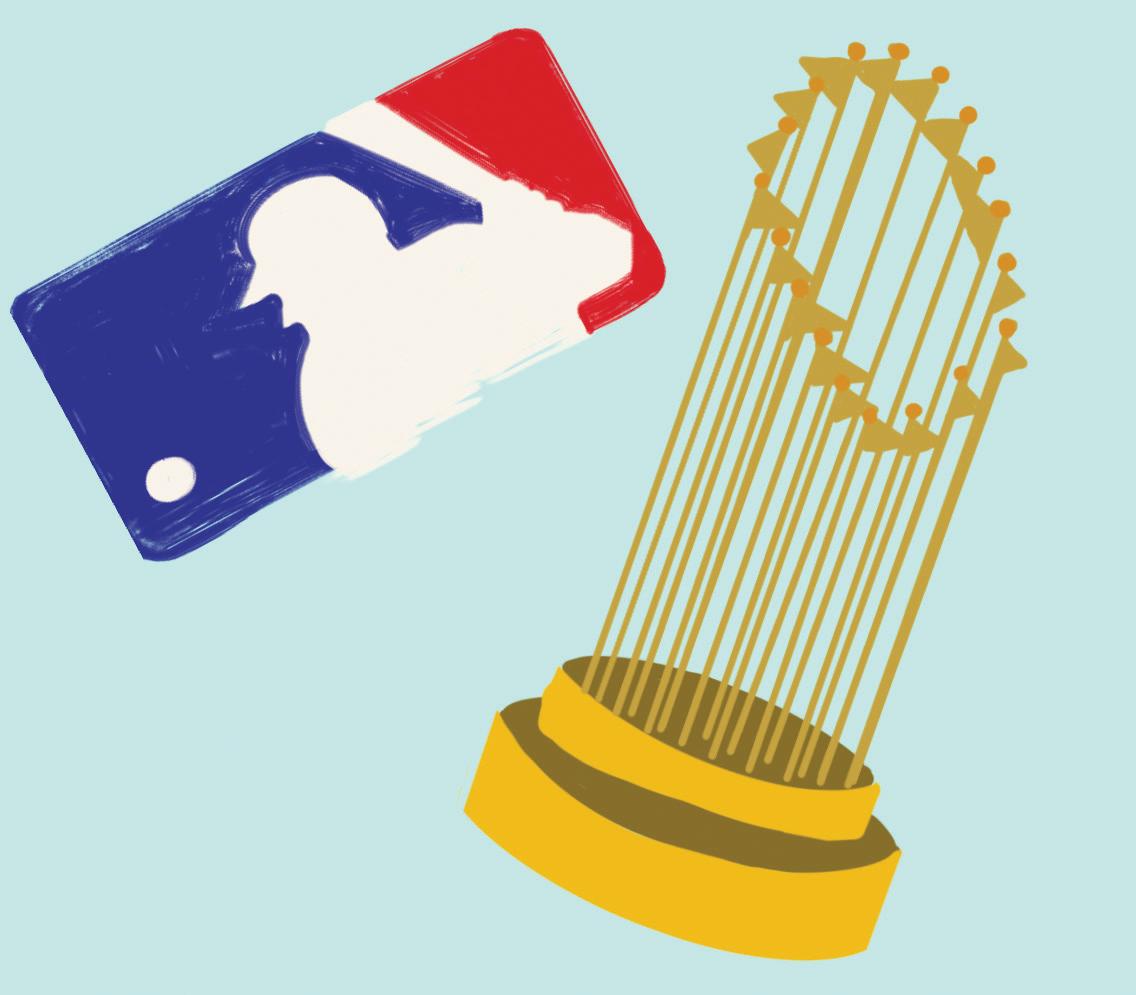
It came at the cost of 11 prospects out of their farm system, including Leo DeVries, MLB Pipeline’s 3rd overall prospect. Preller had been called everything from magnificent to downright crazy.
But, this roster is the deepest in all of baseball, with superstars OF Fernando Tatis Jr. and 3B Manny Machado, a rotation led by Nick Pivetta and Michael King, and their terrifying bullpen. Most importantly, they have the Friar Faithful selling out Petco Park every night. Those fans deserve it.
The Padres have never
won a World Series. They’ve spent money on superstar free agents, made season-defining trades and developed extremely well — and it still hasn’t happened.The teams that win it all aren’t always the best, but the ones that get hot at the right time and play the best defense do. The San Diego Padres are riding a four game win streak and are top three in nearly every pitching category.
marcos.lizarraga@pepperdine.edu
Men’s Water Polo loses two up north
Shane Stephens Assistant Sports Editor
Pepperdine Men’s Water Polo traveled to the No. 2 University of California, Berkeley and No. 4 Stanford University for two matches Sept. 27-28 in Northern California.
The Waves fell to the Golden Bears 14-12 in the first match and 19-14 to the Cardinal in the second match, dropping their record to 8-6 on the year.
Pepperdine entered the weekend ranked No. 11, according to the Collegiate Water Polo Association.
Both Cal and Pepperdine started slow in their match, with both teams combining for just five goals in the first period. Senior attacker Sandor Gal scored the first goal for the Waves with two minutes left in the first period, according to Pepperdine Athletics.
Graduate attacker Dane Howell
opened the second period with a quick goal for the Waves. The Golden Bears responded with two goals, but the Waves scored three in a row to take a 6-5 lead at halftime, according to Pepperdine Athletics.
Cal regained the momentum in the third period, scoring five goals to Pepperdine’s three and taking a 10-9 lead heading into the fourth.
The Waves would not close the gap in the fourth and fell 14-12 after a Golden Bears’ goal with 22 seconds left to shut down the possible comeback.
In the following match, Pepperdine started slowly as the Cardinal took a 5-1 lead with five minutes left in the second period. The Waves quickly scored twice before the half to be down 6-3, according to Pepperdine Athletics.
The Waves’ defense could not stop Stanford’s offense, as the Cardinal scored seven goals in the third period,
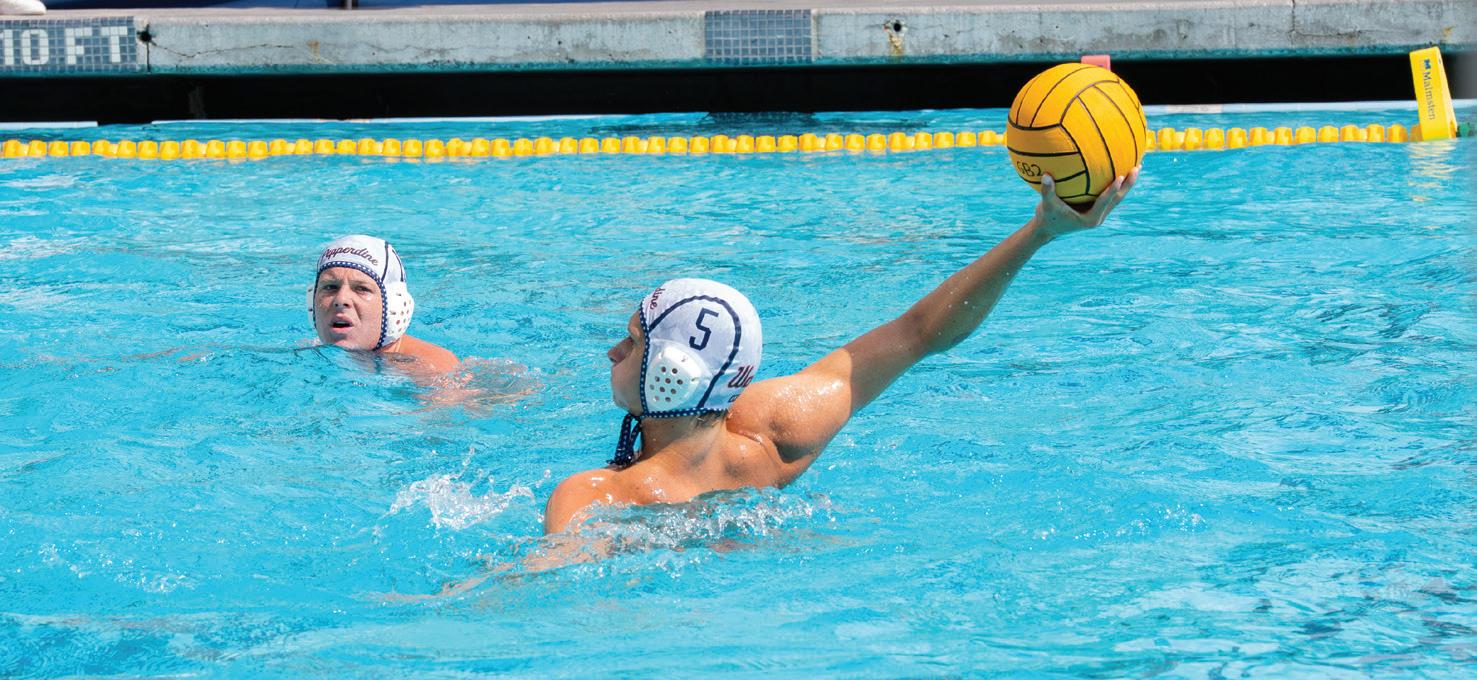
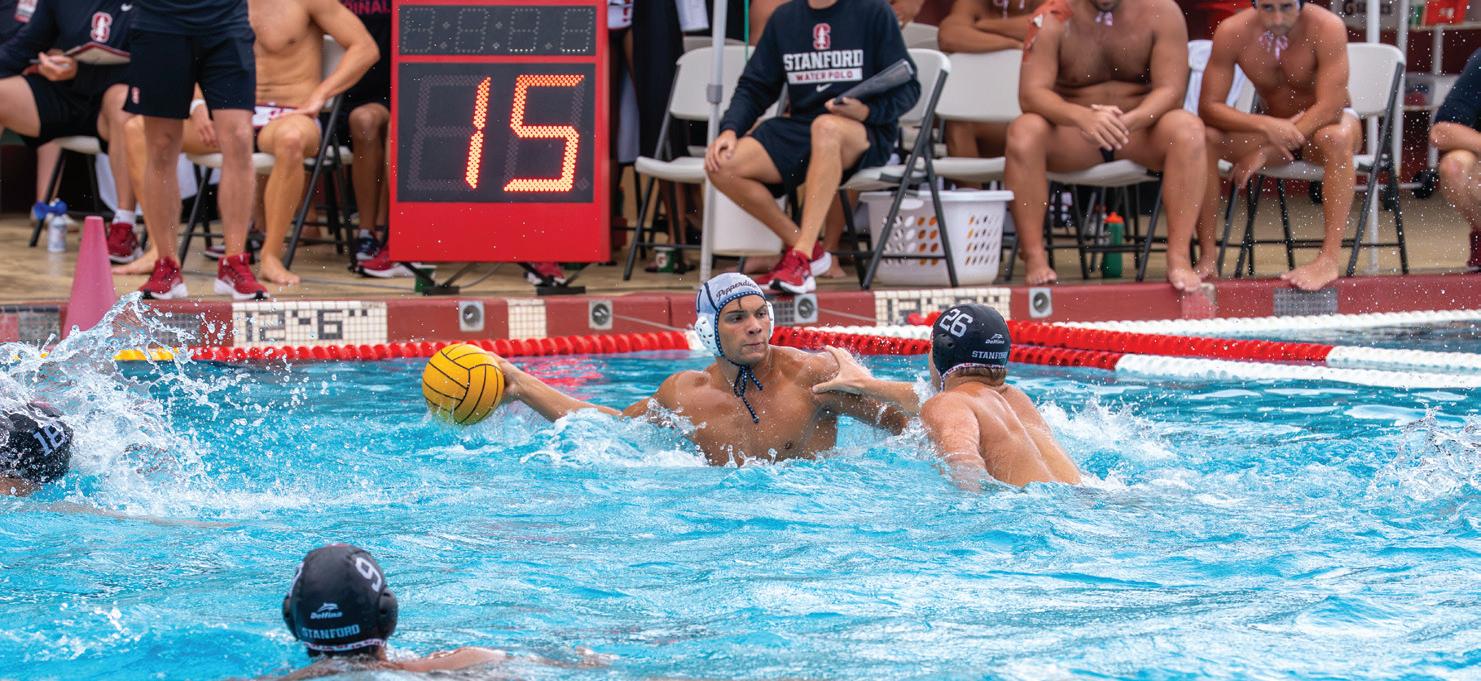
four of which came before the four-minute mark.
Pepperdine’s offense finally came alive in the fourth period, scoring eight goals, including two from graduate center Matty Walsh and bringing his total to three goals in the match, according to Pepperdine Athletics.
Stanford responded with six goals of their own in the fourth, thanks to senior attacker Gianpiero Di Martire scoring a pair to maintain a five-goal lead and take the win 19-14, handing the Waves their second loss in a row.
Pepperdine ended the weekend with a total of 26 goals, 21 assists, 47 total points and 11 steals between both games. Sophomore attacker Erik Ionescu led the Waves with six goals, followed by Howell and Walsh with five each, according to Pepperdine Athletics.
All six of the Waves’ losses this
season have been to teams in the top 15, bringing their record to 6-7 against ranked opponents, according to Pepperdine Athletics.
Pepperdine’s next match is against No. 9 California State, Long Beach on Oct. 3 at the Ken Lindgren Aquatics Center.
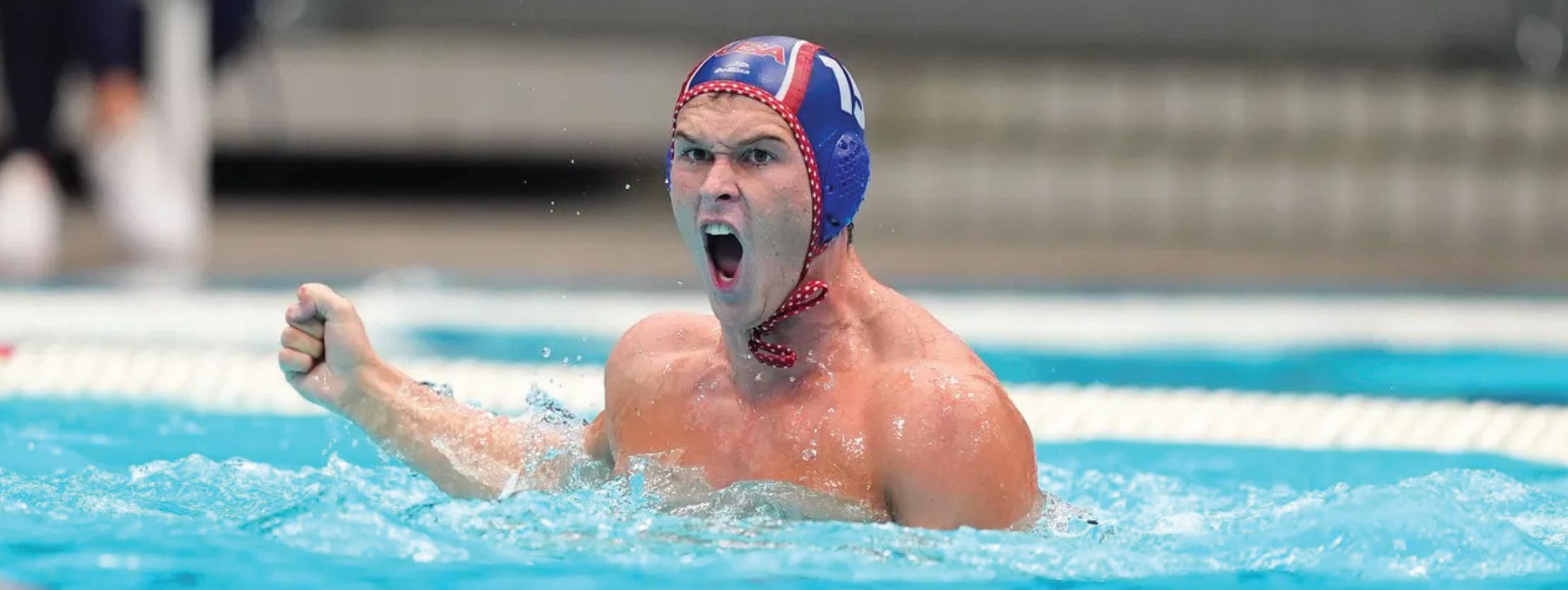
In the deep: Carcarey rises to the surface
Ava Walton Sports Staff Writer
Jon Carcarey’s journey to playing Division I water polo and securing a place on the Junior National Team is far from normal, especially for someone who once feared the water.
Carcarey is a junior here at Pepperdine University and one of the Men’s Water Polo team captains. Carcarey’s water polo journey began at age 13, when he said his parents encouraged him to pick up a sport. Though it wasn’t his first choice, Carcarey reluctantly joined a water polo camp, despite a deep fear of the pool itself.
“I was actually terrified of the water,” Carcarey said. “I’d never gotten in the pool before or in a jacuzzi or the ocean because I was terrified. I didn’t know how to swim or anything. And they pushed me in, and I don’t know how, but somehow I fell in love with water polo.”
From Passion to Leadership
Once Carcarey had fallen in love with the sport, he had his goals set. The junior began to rise through the ranks over time, being driven by the physical and mental demands of the sport, he said.
“The challenge that it brings is the physicality,” Carcarey said. “It’s very special to be an athlete, especially a DI athlete, and just to pursue that. Physicality is something that you don’t really get out of anything else in life.”
The sport’s physical demands and the chance to become a Division I athlete motivated Carcarey to aim for the Olympics, confident in his ability to compete at the highest level. Playing
college water polo was a step in the right direction, and being at Pepperdine has helped him along in that journey, Carcarey said.
“Playing at Pepperdine is definitely a dream, like a dream come true,” Carcarey said.
Teammate Jackson Benners, who has played alongside Carcarey since high school, used two words to describe him: grit and passion.
“He always puts his head down, plays through injuries and doesn’t complain,” Benners said. “He’s one of the best defenders in college water polo, and everyone knows he has your back.”
The title “team captain” was not something Carcarey had aimed for, although it was a role he had received.
“It was never something I desired,” Carcarey said. “But now that it’s here, I’m learning — sometimes the hard way — how to lead.”
Head Coach Merrill Moses said he had seen the potential in Carcarey since his time in high school. The way Carcarey has grown is the reason that Moses selected him to be a team captain this year.
“I’ve watched him grow — obviously physically but also mentally, where he’s just grown up and takes appreciation and understanding of what his role is because he’s the type of athlete that leads by example,” Moses said.
National Team Experience
Carcarey was part of the U.S. Junior National Team this summer at the U20 World Championship, according to Pepperdine Athletics. Representing the U.S., Carcarey helped the team take
a silver medal at the U20 World Championships. This was the first time the U.S. had reached the final, Carcarey said.
“We made history,” Carcarey said. “We’ll be in the record books forever. That’s something I’ll never forget.”
Carcarey said having the opportunity to take the silver medal and being able to represent his country at the highest level is something he will always remember. This experience helped shape how he now approaches his game at Pepperdine.
With his return from playing at this level, Carcarey said he approaches his sport with a sharper eye, taking the lessons he’s gained and using them to elevate his game at Pepperdine.
“Ever since coming back, I feel like a different player and a different person in the water,” Carcarey said. “It helps me a lot with leading because I was able to be around such high-level athletes and great players that it really helps me learn how to lead with other types of players and kind of step up into that position when I’m needed.”
As the season progresses, Carcarey said the goal is for his team to peak in November and December. In the past seasons, the team had peaked too early.
“This year’s goal is to peak at the end of the year when it matters and when the playoffs are coming around,” Carcarey said.
His individual goal is to become an All-American and make the WCC All-Conference team, but his goals reach further than college, Carcarey said.
“For the future, the 2028 Olympics, that’s really what I’m pushing for,” Carcarey
said. “And no matter what, I want to play professional water polo after college.”
Moses said Carcarey’s time with the national team gave him the opportunity to bring valuable experience back to Pepperdine, and his growth has been evident. He believes that Carcarey is just beginning his journey.
“We’ve already seen him grow as a player and as a person because of that experience, and he’s brought that back to Pepperdine,” Moses said. “He definitely is gonna be in the discussions for Team USA. You have to go through the process and put in your time, which he’s doing, but I see him competing to be an Olympian after college, and I know that’s one
of his main goals.”
Moses said he wants to encourage people in the area to attend the team’s games this season, noting that Carcarey and the team are worth watching. He invited anyone in the area to come see the team play in person, emphasizing that their performance speaks for itself.
“Jon is special, and this team is special.” Moses said. “If you’re anywhere near Malibu this season, come watch. You’ll see it for yourself.”
ava.walton@pepperdine.edu
